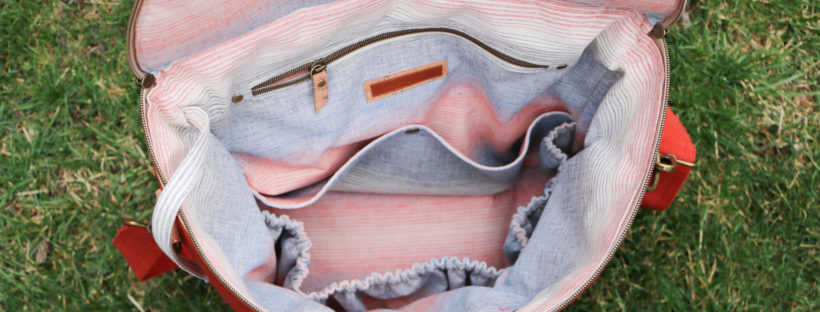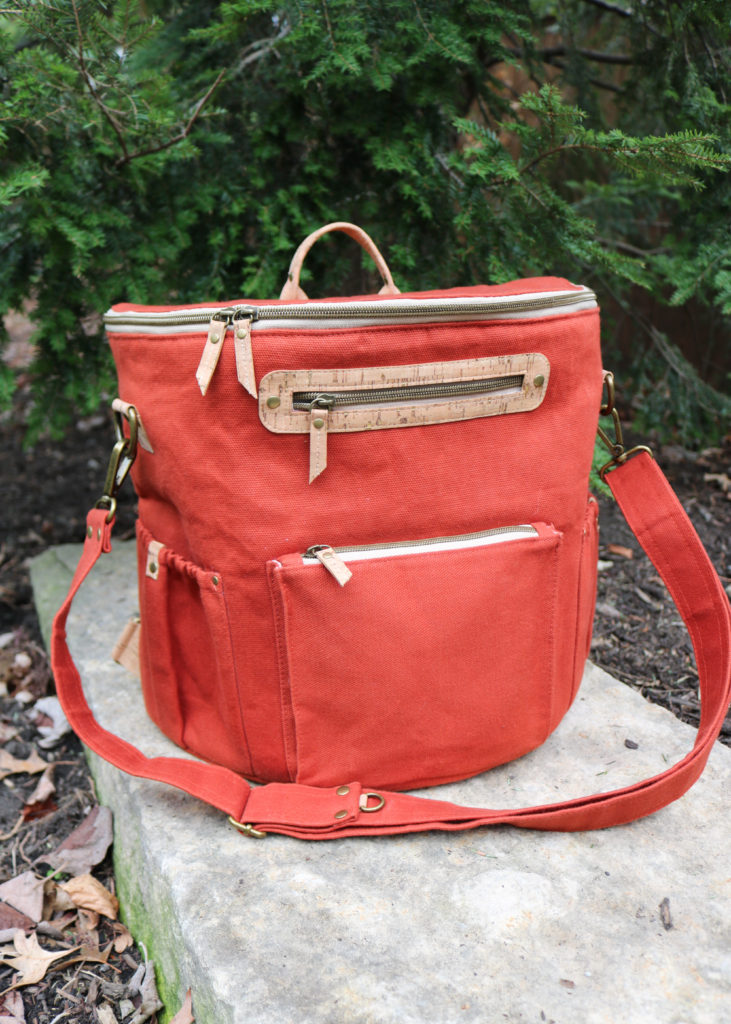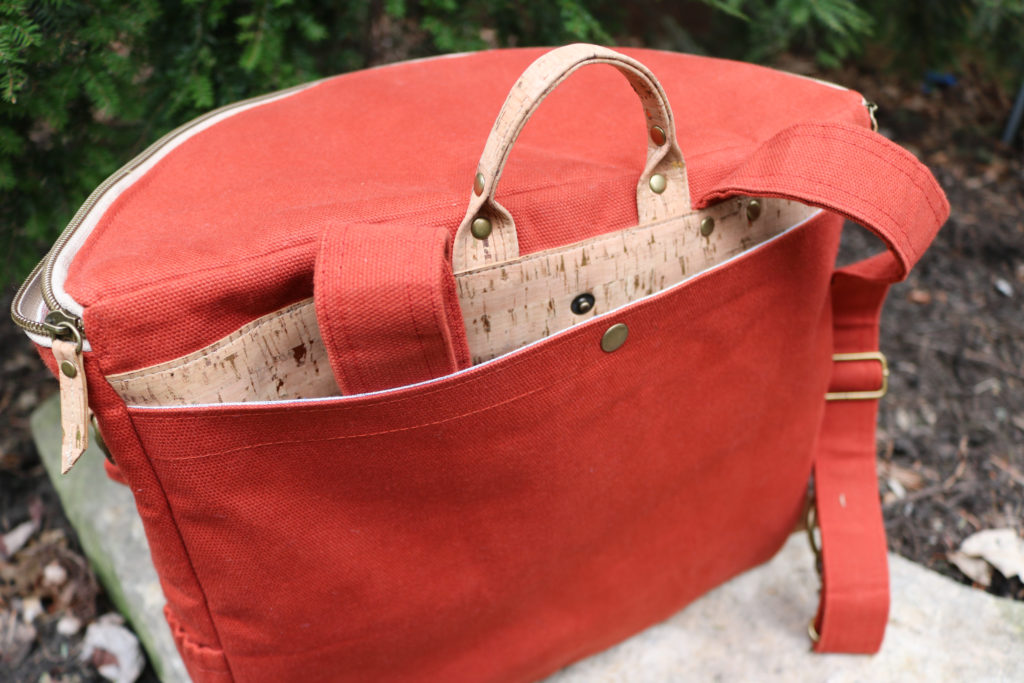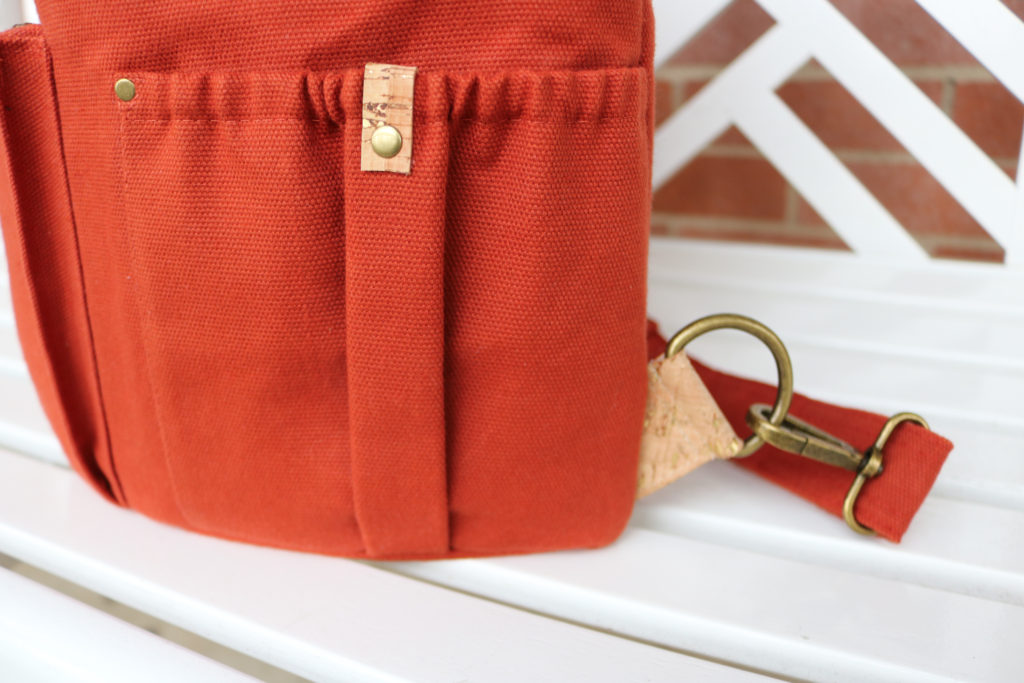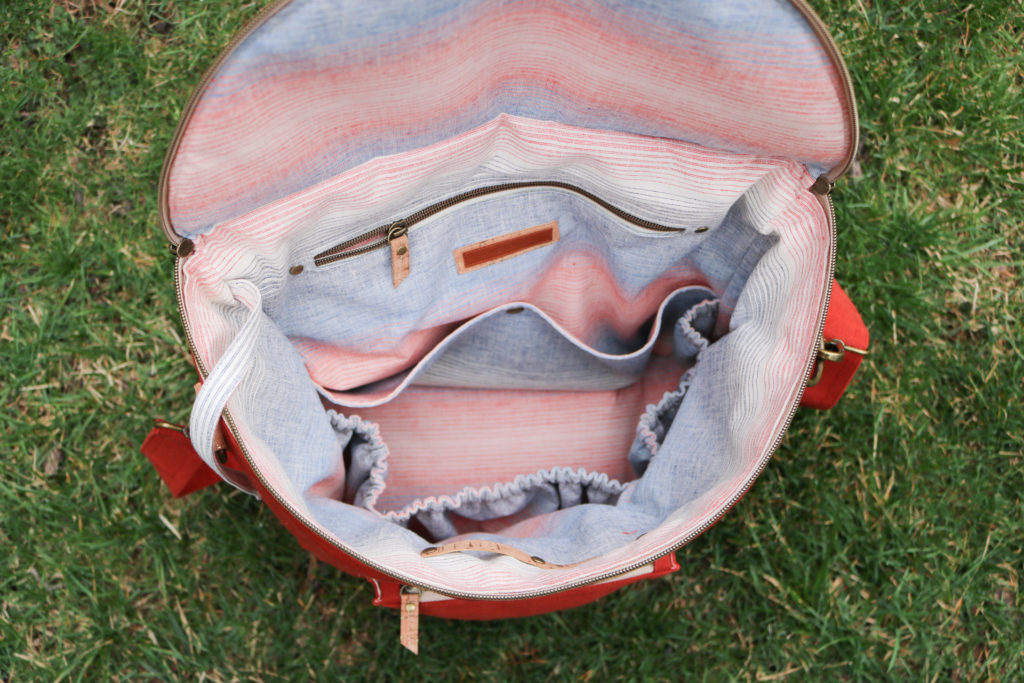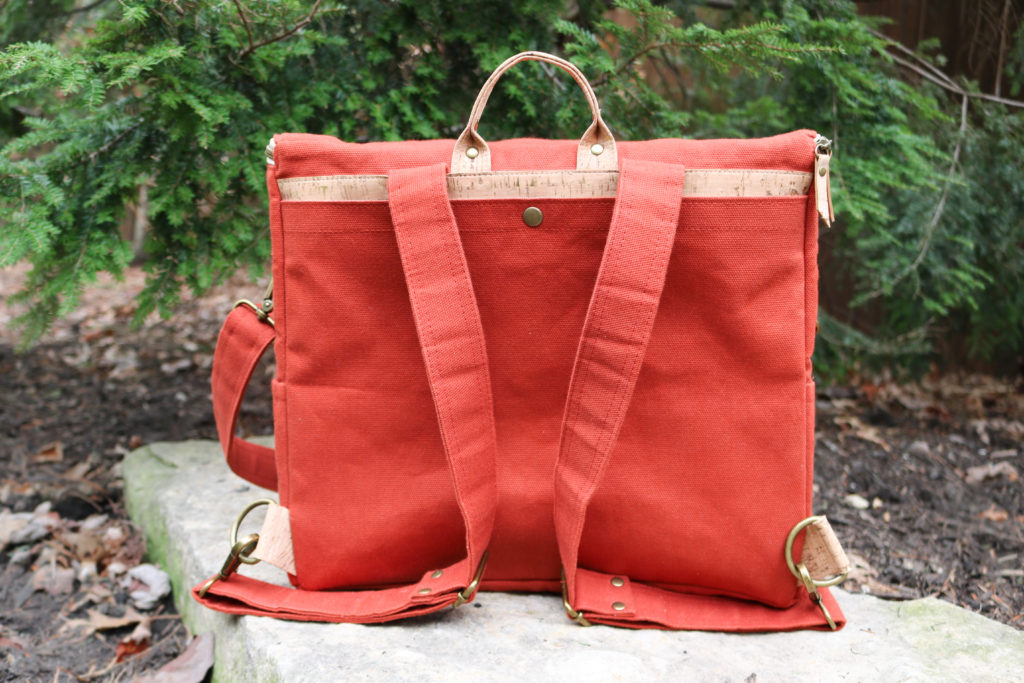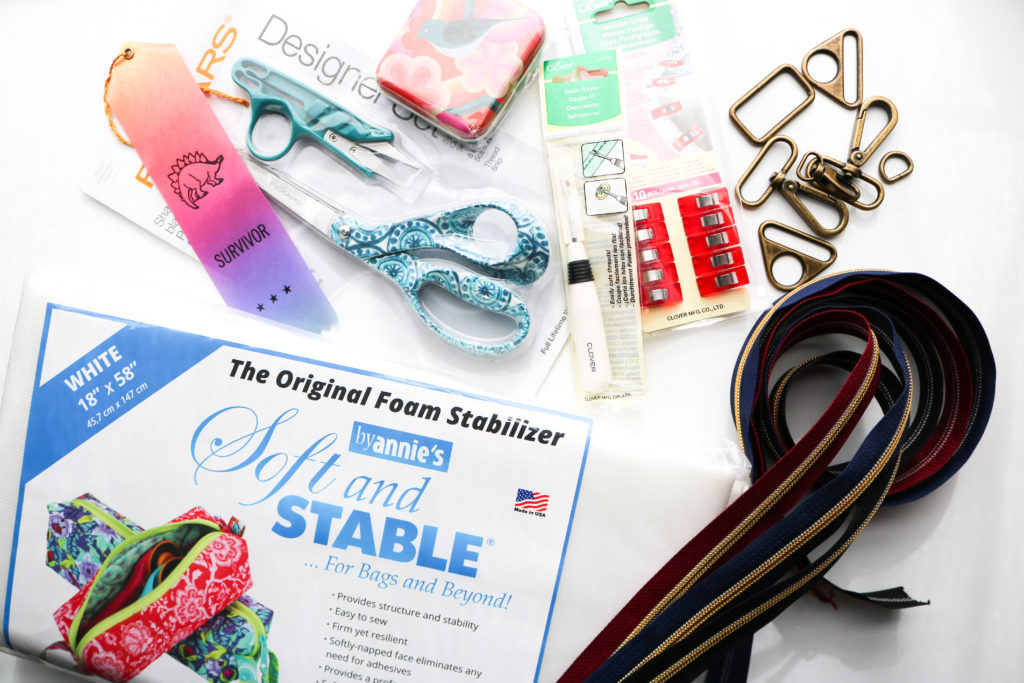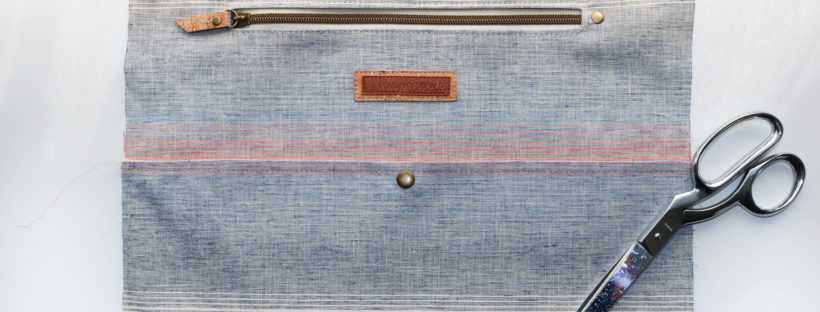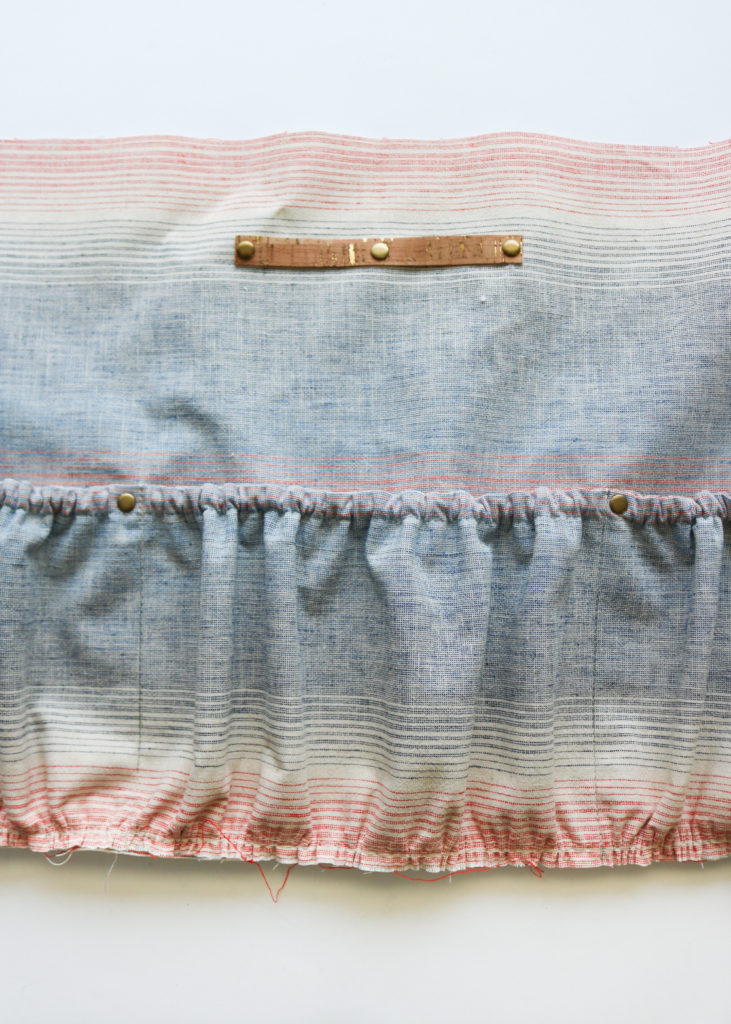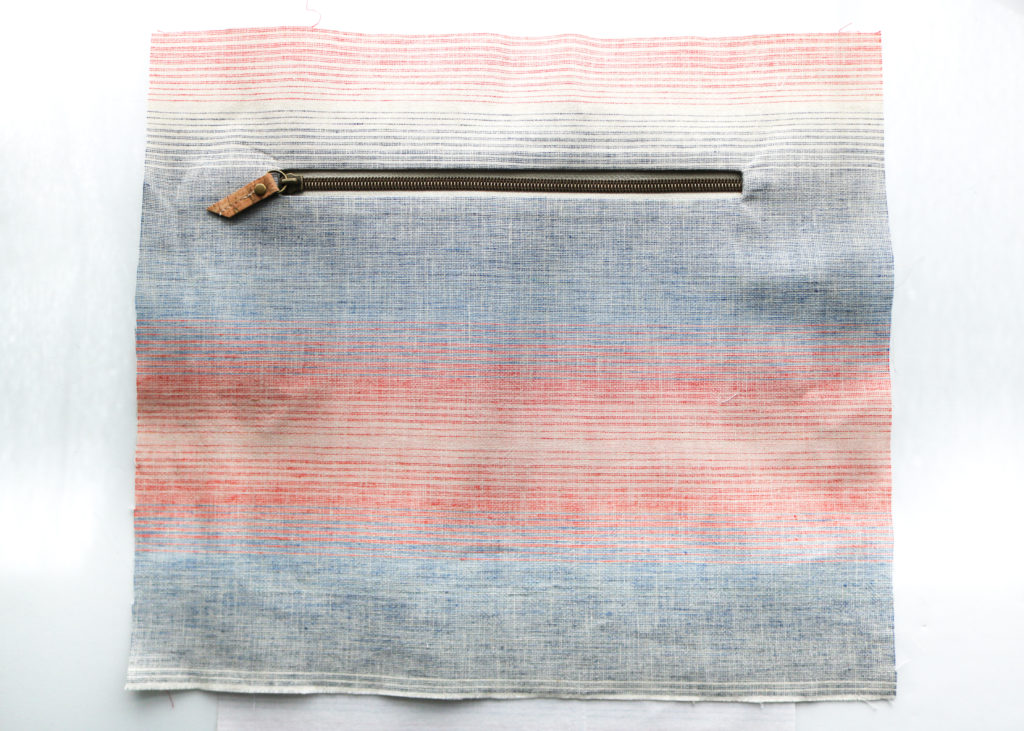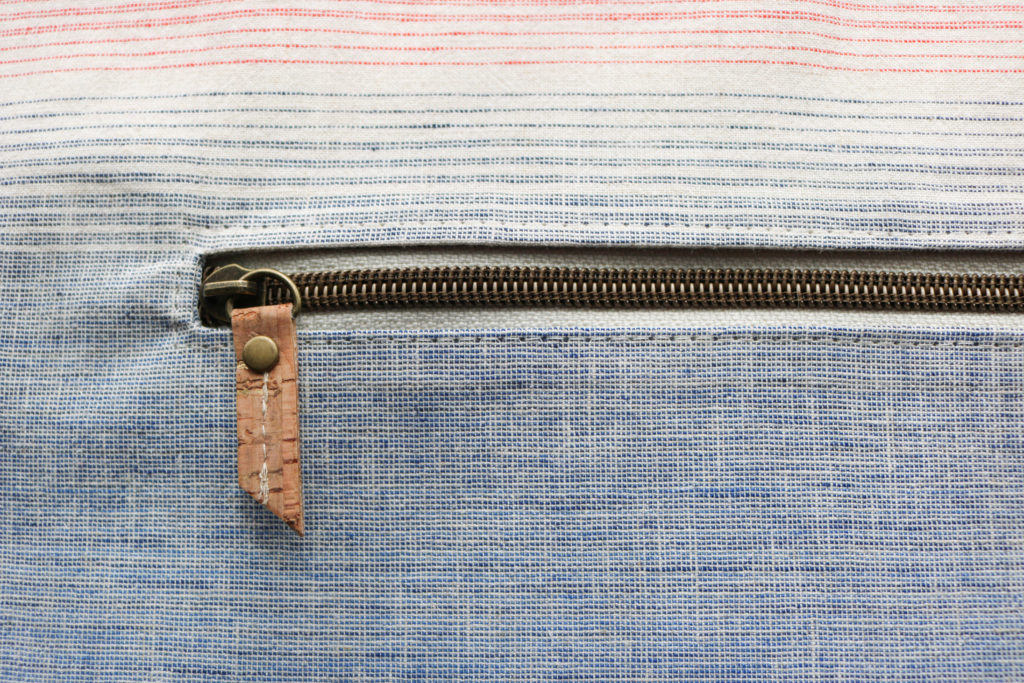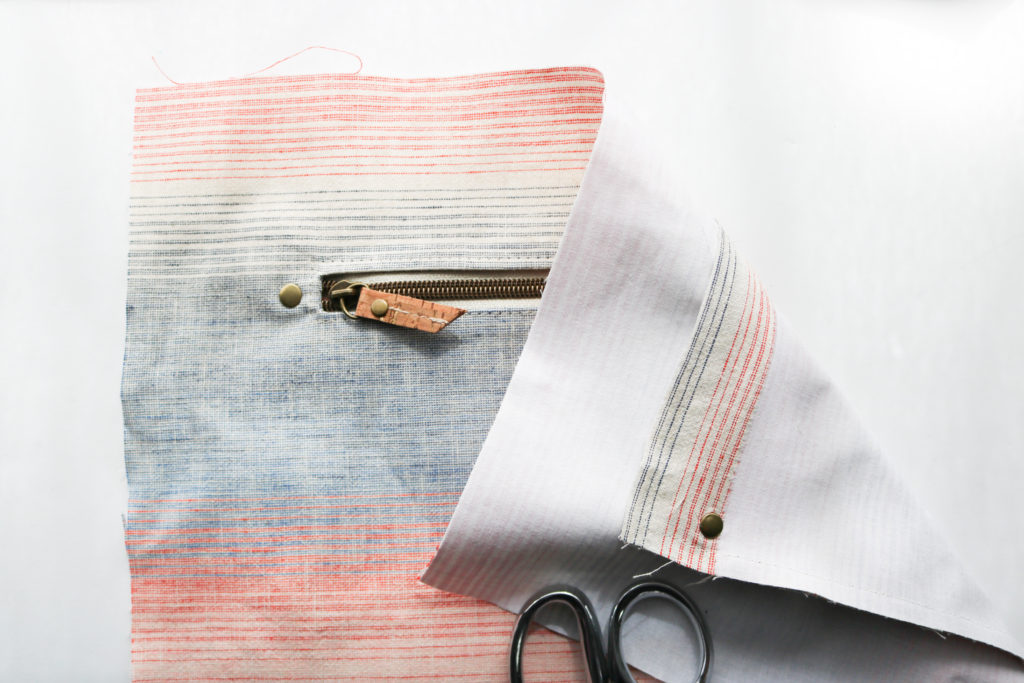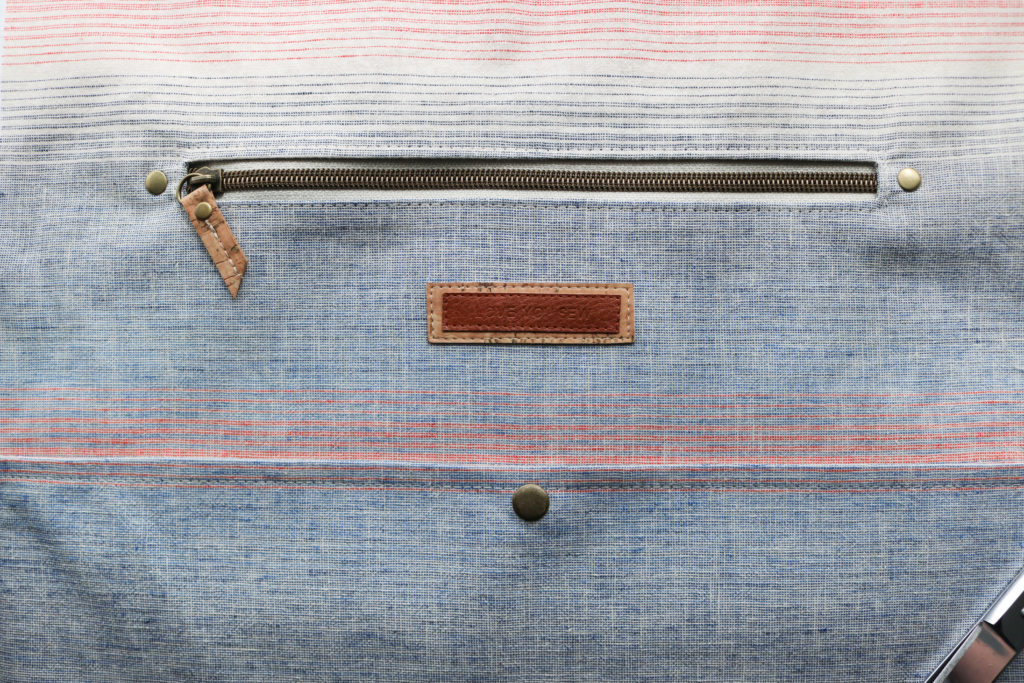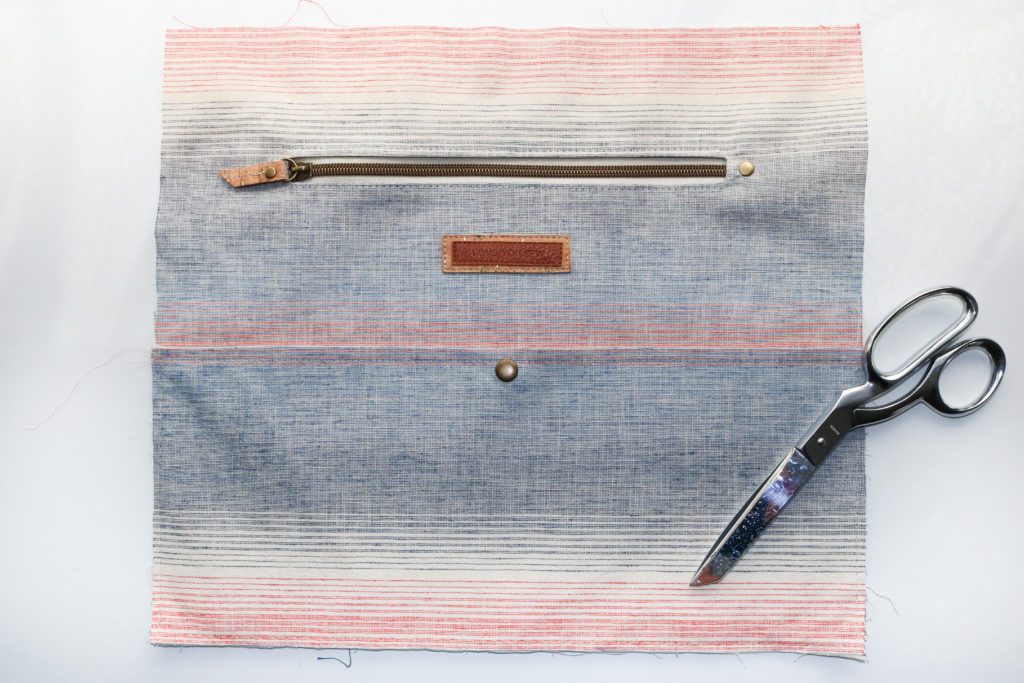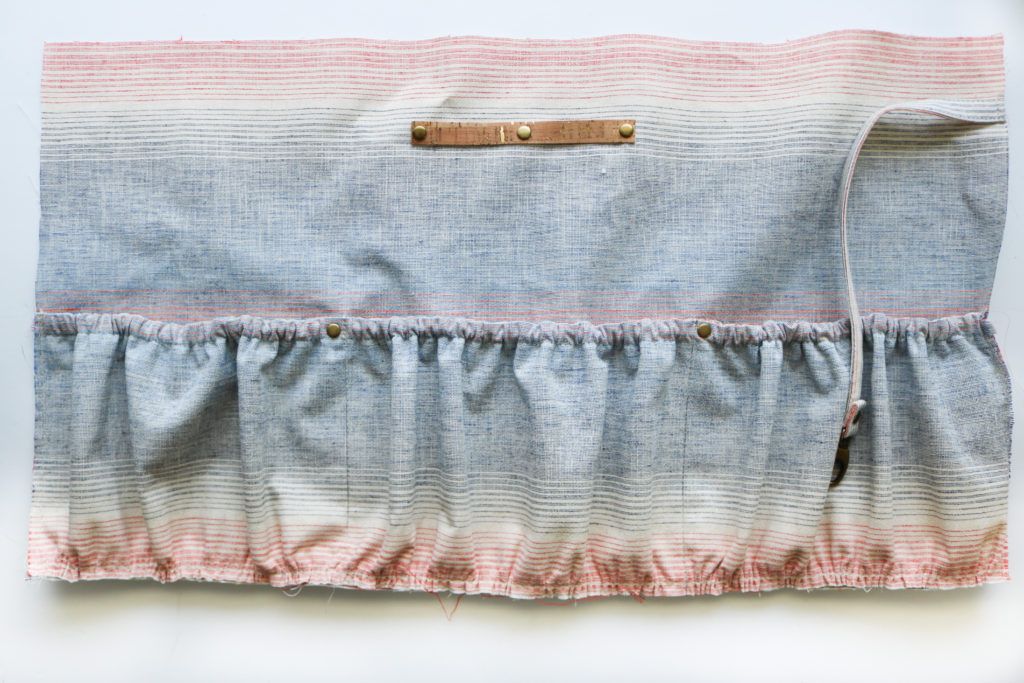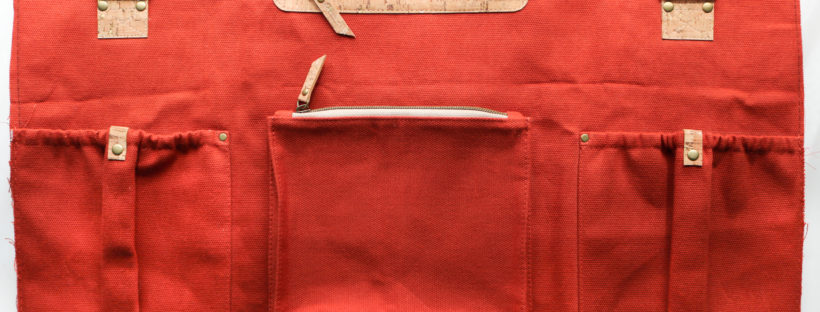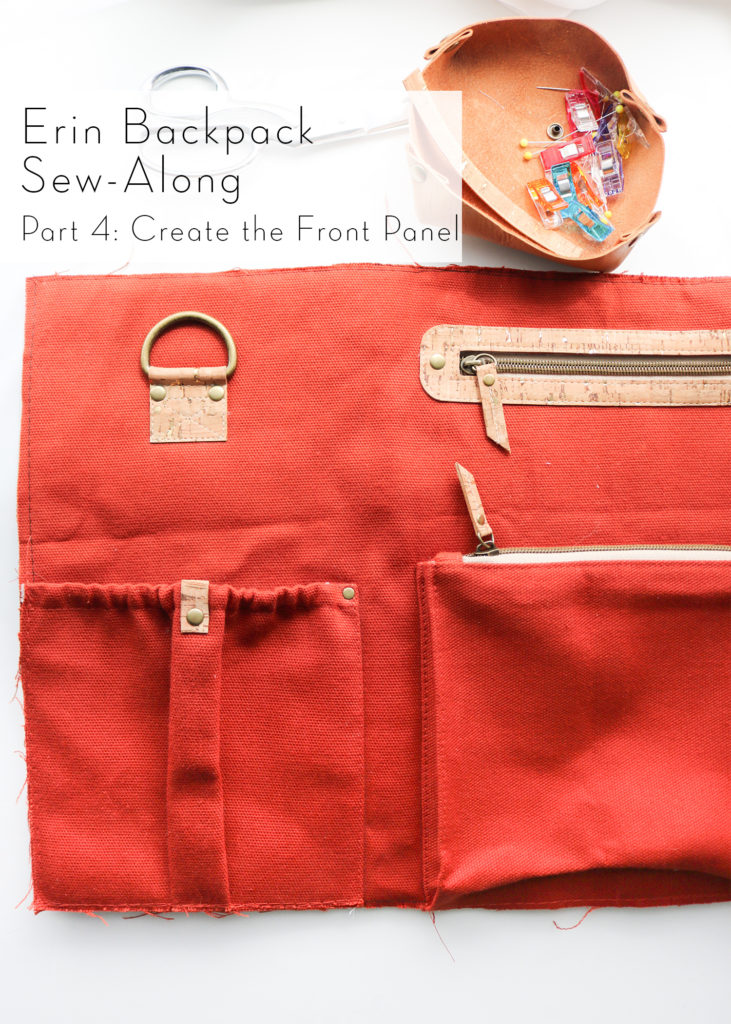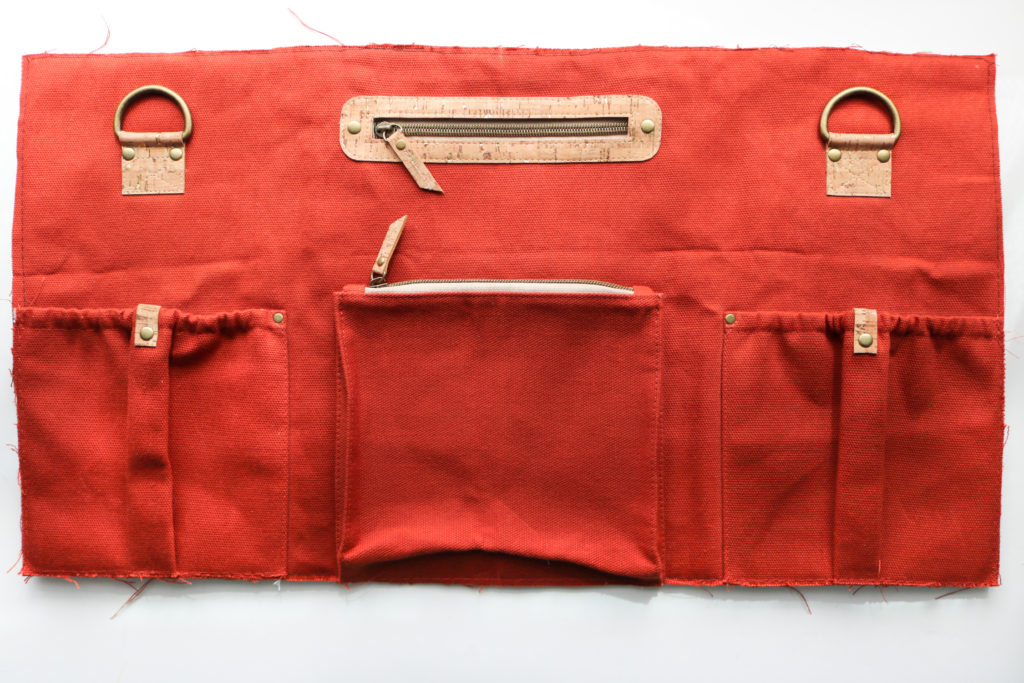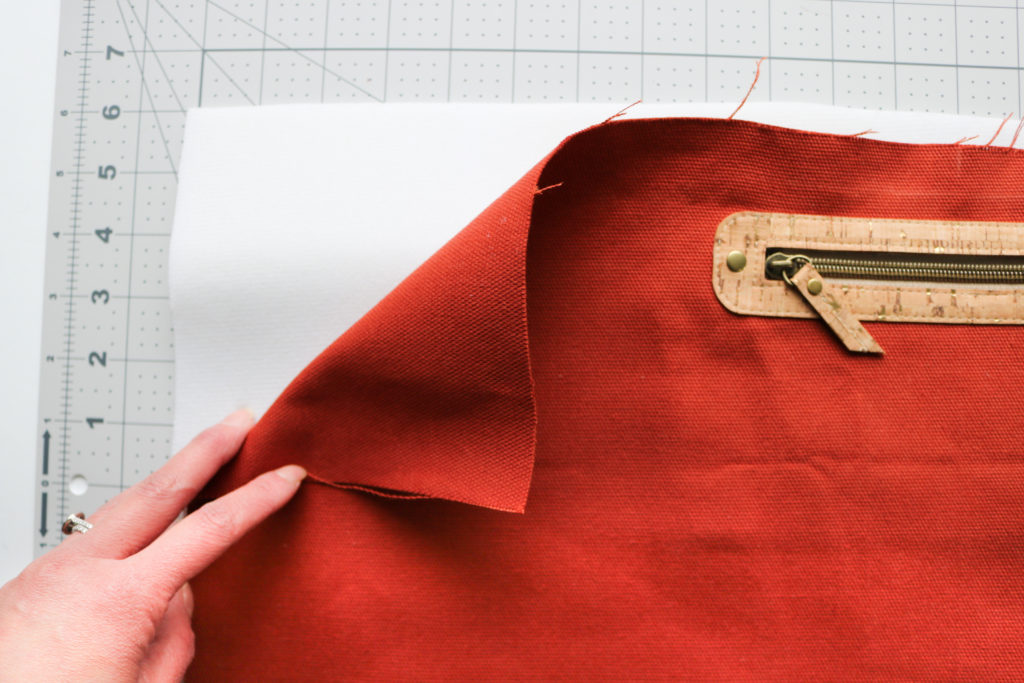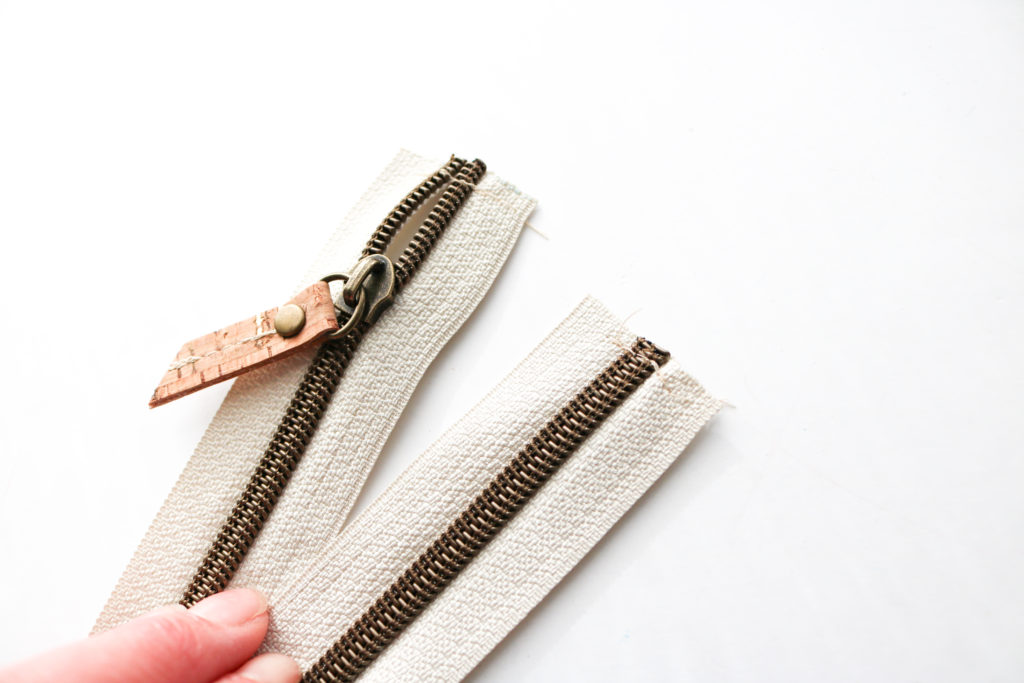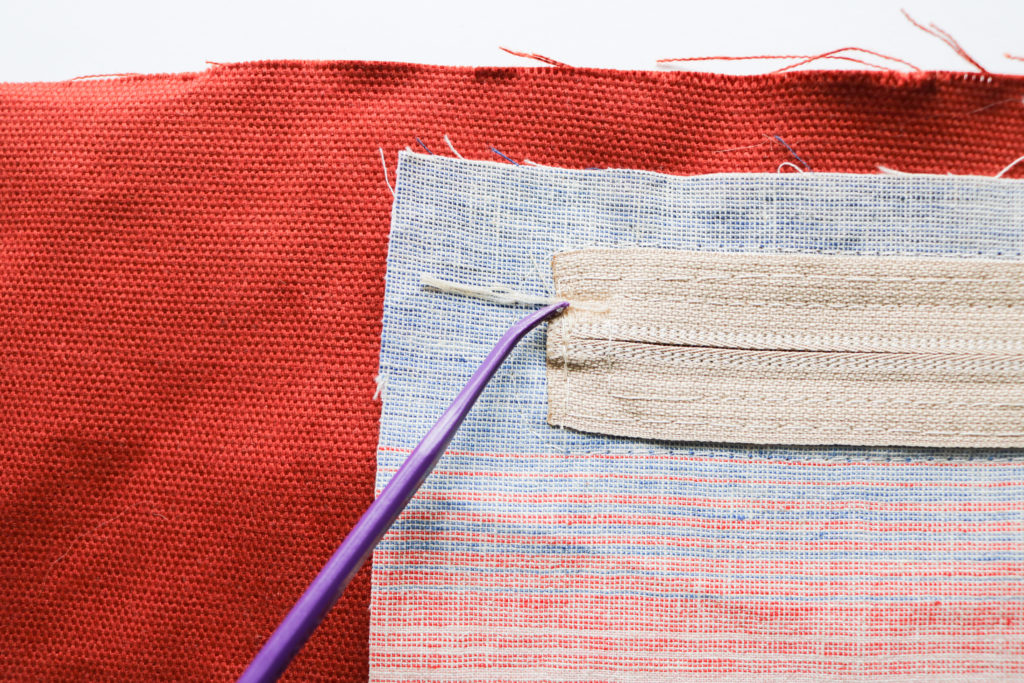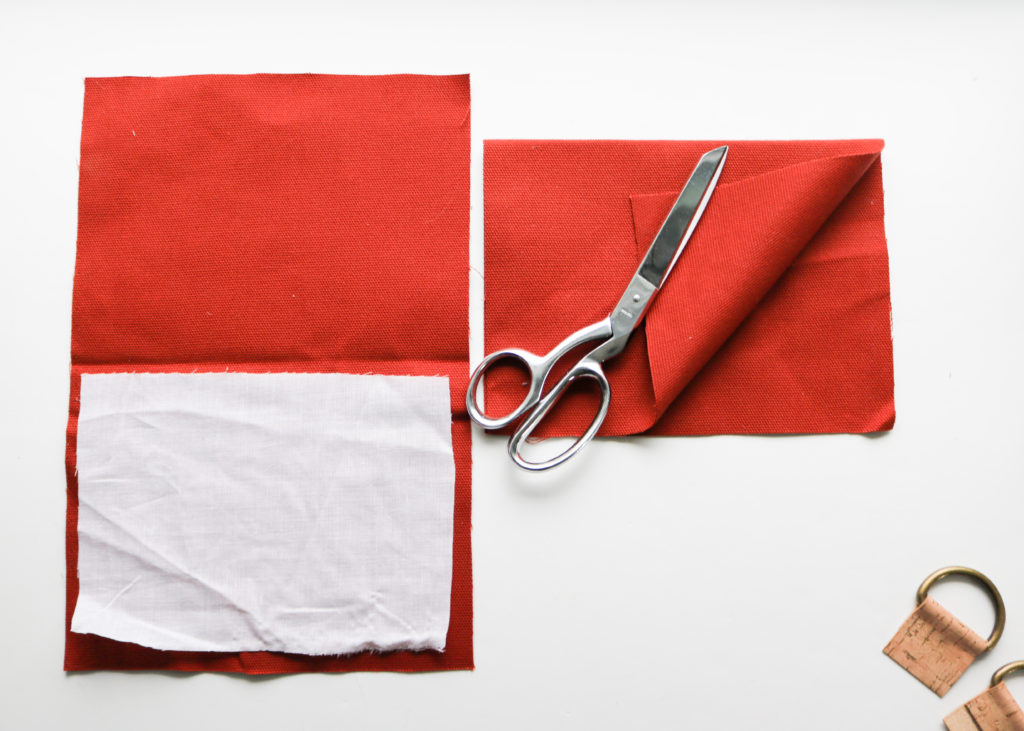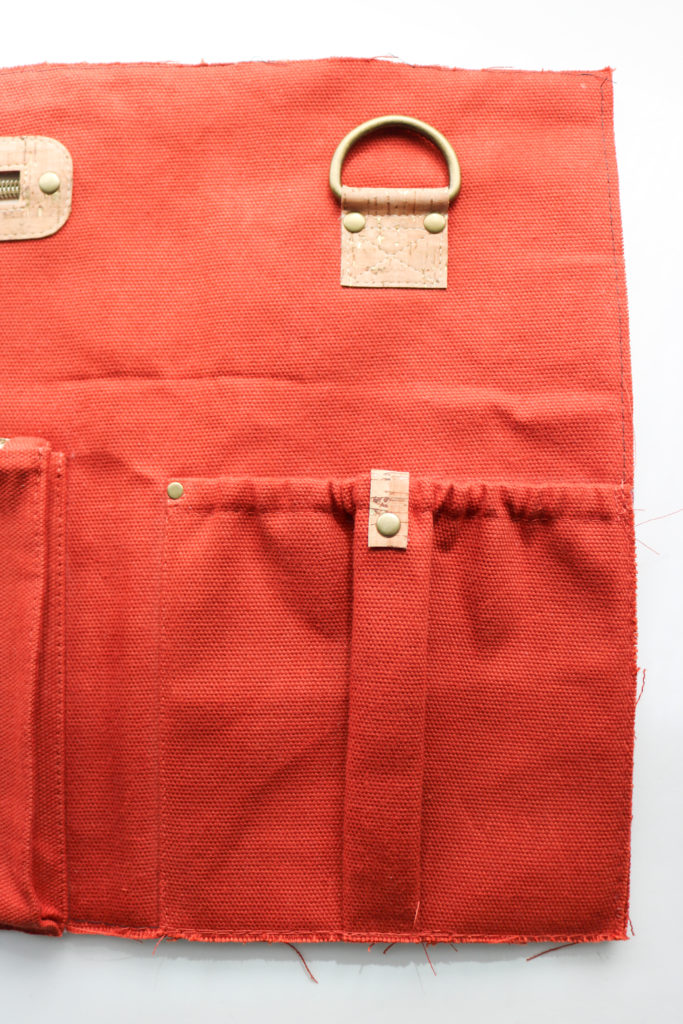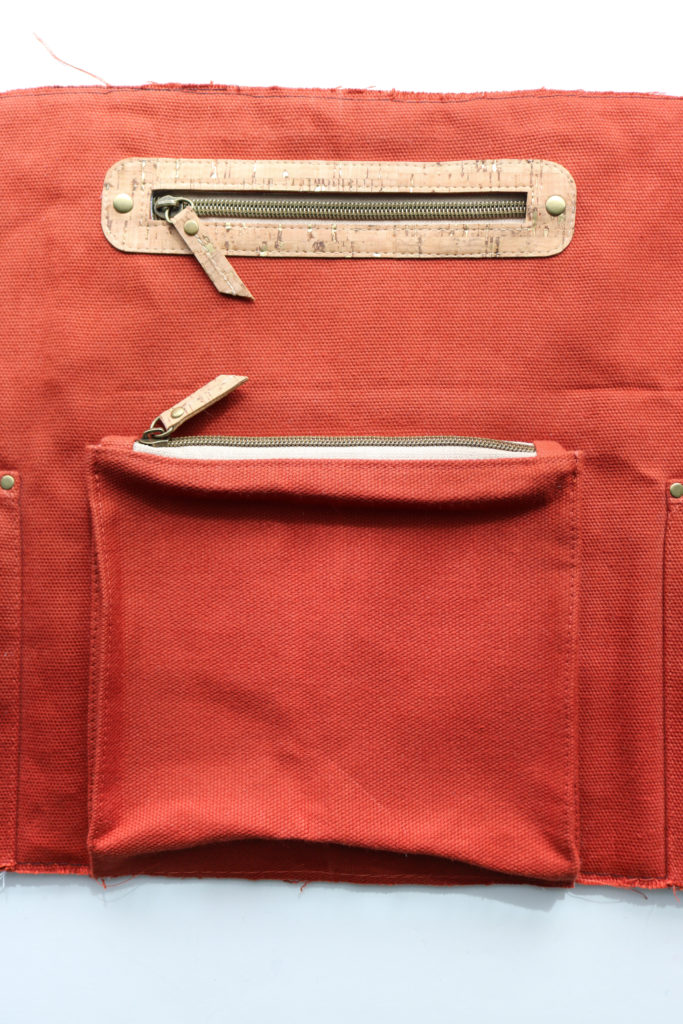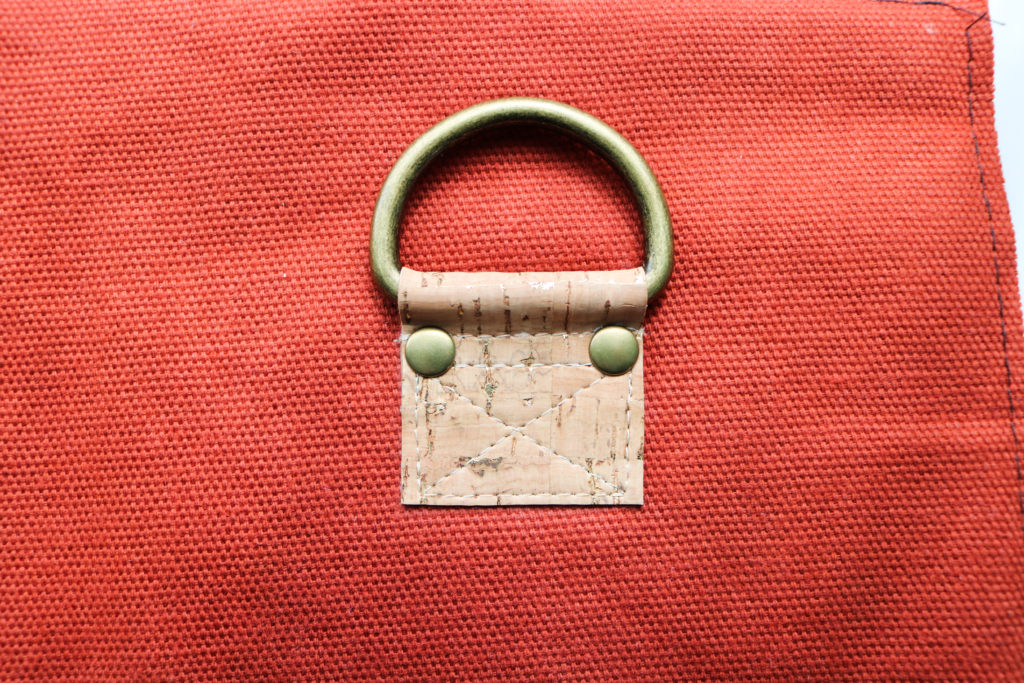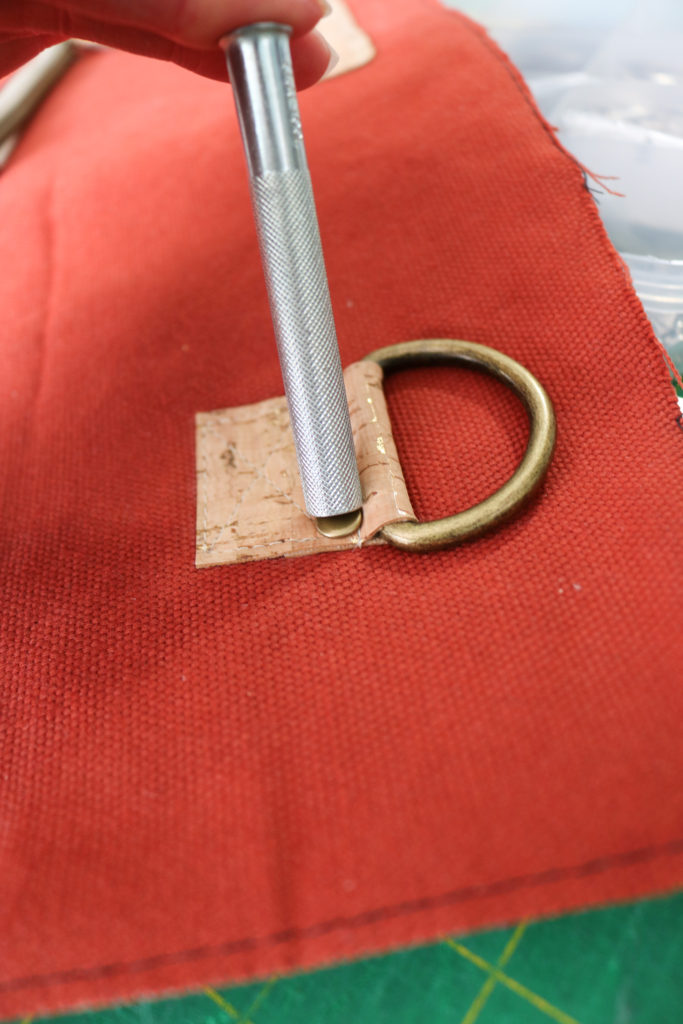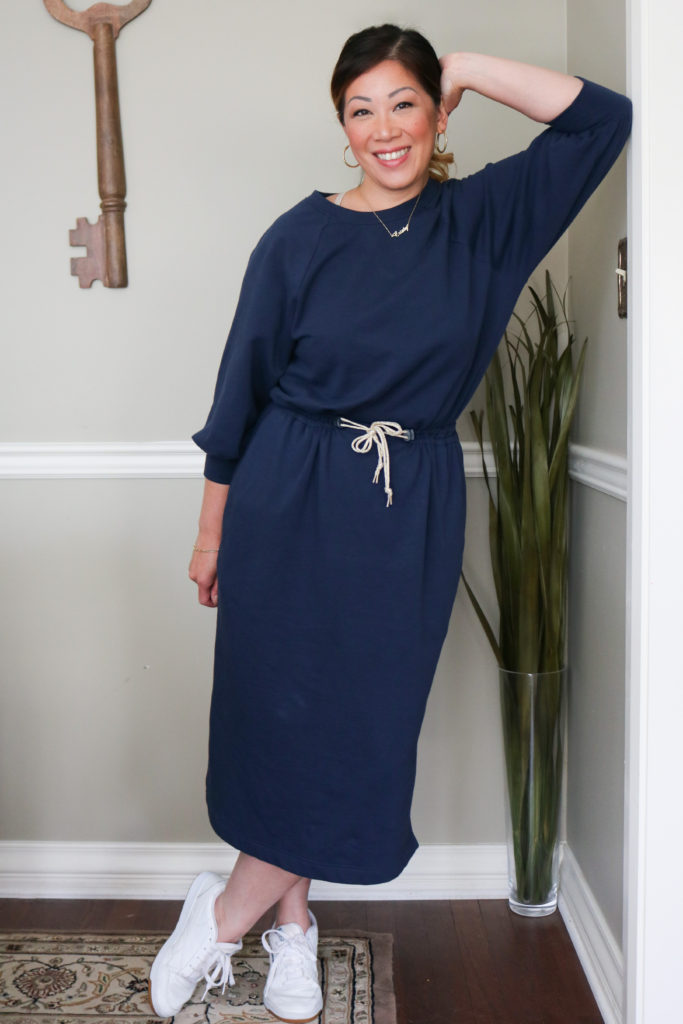
If you are like everyone else, you’ve been finding that that sweats and pajamas are the go-to wardrobe staples of this past year. I was in a pretty good funk for awhile and found that I needed to “get dressed” in order to be somewhat productive during the day. With a work-from-home lifestyle, I definitely go back and forth with a “real outfit” and just staying in my sweats. Well folks, I think I found my answer to wearing a sweatsuit (all the time) during this pandemic. To “change” things up, I’ve found the glory of the sweatshirt DRESS in the Fibre Mood Joy!
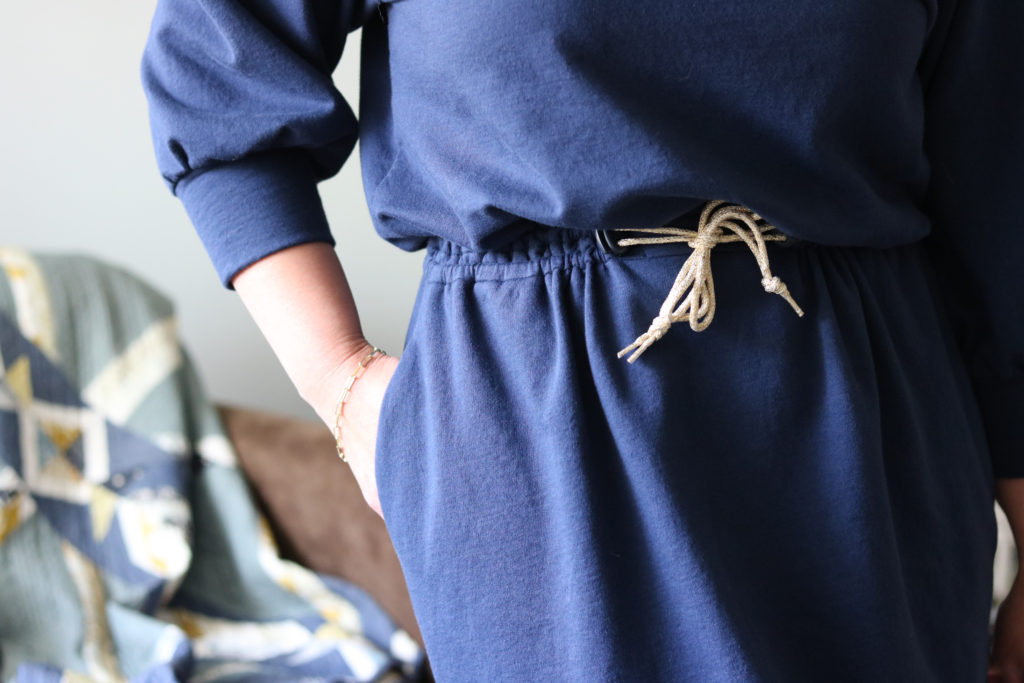
PATTERN
Fresh out of Fibre Mood Magazine #14 is Joy. She is fun and sporty, but looks good in a dress! If you didn’t think your wardrobe routine could get any easier, a sweatsuit became a dress! There is only one piece to slip over your head and the quick adjustments of the waist toggles gives you some definition. This is why I HAD to make this dress — comfortable casual all in one garment!!!
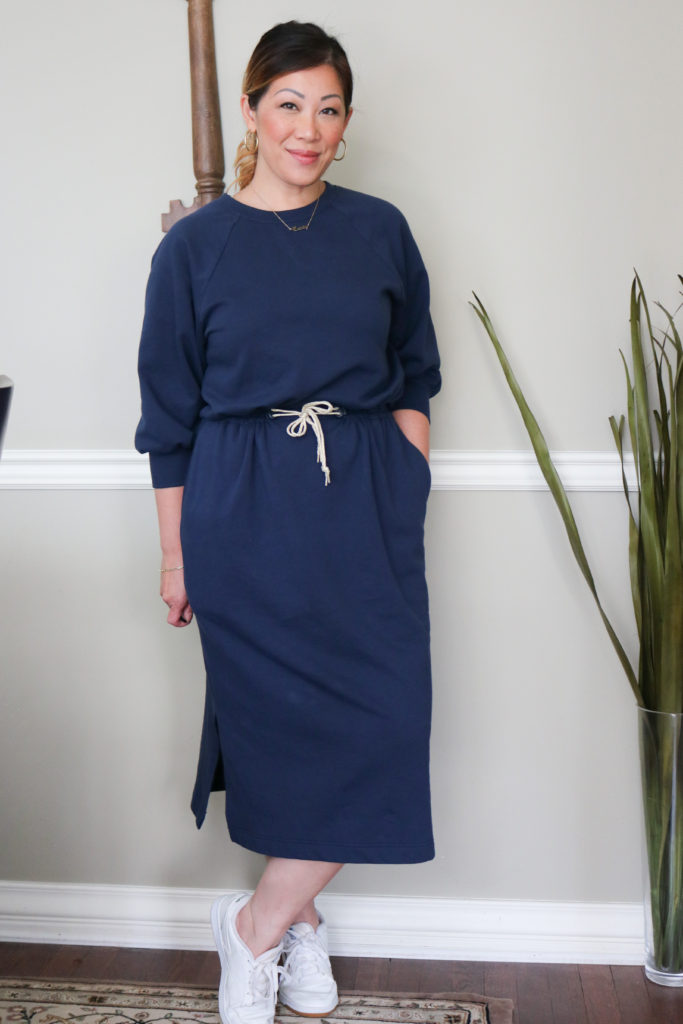
I measured a medium in the bust and large in the hips. After looking at the finished measurements, I thought I would go with a straight medium, but decided to go large in the skirt since last issue’s Paulette came in slightly smaller than anticipated. Next time, I will go with a large waist and grade to a medium hip to actually take the hip curve out of this pattern. The cinching of the waist provides the needed shape, but I think the curve of the hip made it a little too “flappy” for my body. Leaving the skirt more straight would also allow you to wear the dress relaxed and un-cinched.
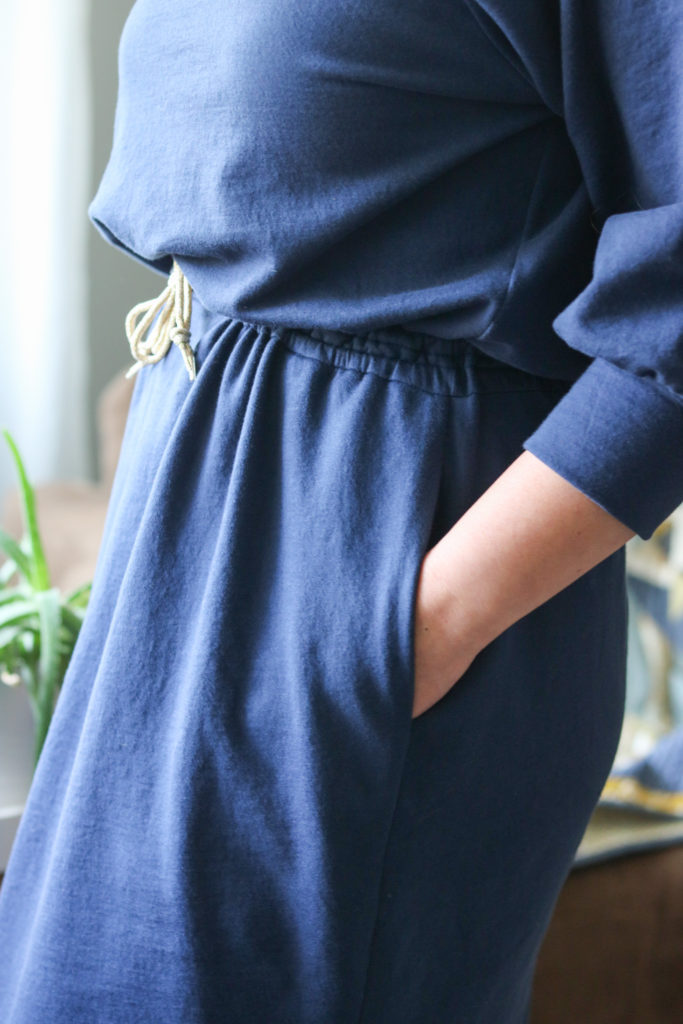
As with out of my me mades, I had to make a few modifications 😉 My #1 must-have change was to add pockets. Honestly, I can’t wear any dress without pockets anymore…so I will always add them even if the pattern authors leave them off (why would they ever!?!)
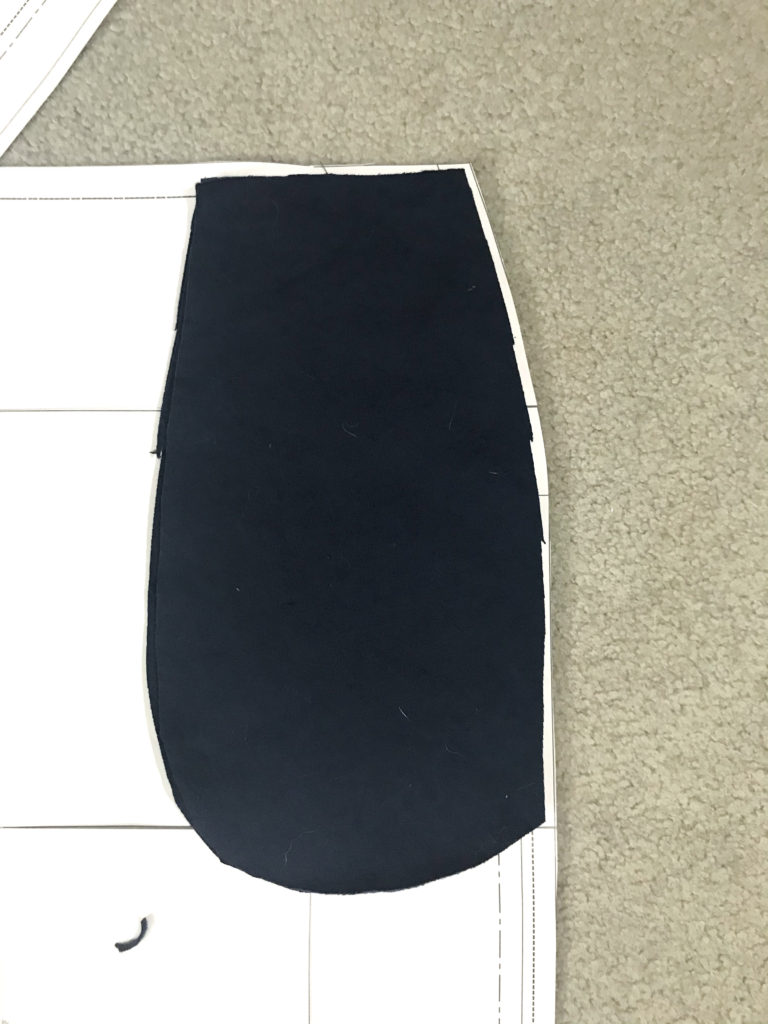
Fresh off making the Sirocco Jumpsuit, I used the large pocket template to make sure I could anchor the tops into the waistband. This is just a guide since the pocket also needs to true-up with the side seam and the top of the skirt.
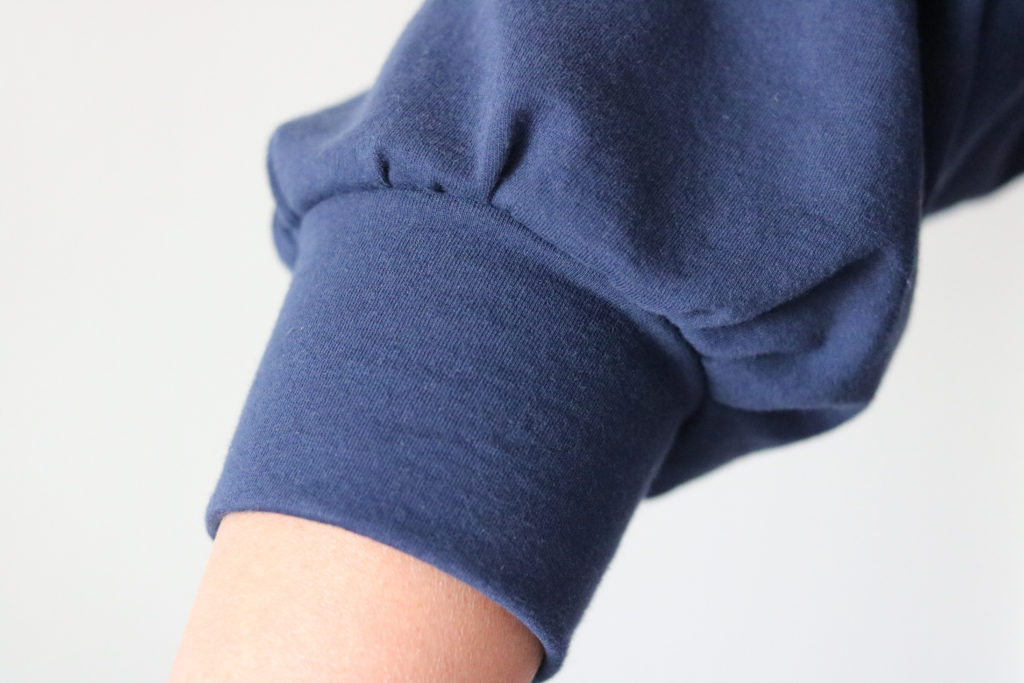
Another change I made was to add cuffs to the sleeves. I do love the look of the relaxed wide sleeves, but since I’m short (5’3″) I know that some features will swallow me up. I added 3″ long (6″ total) and 9.5″ wide tapered cuffs to fit around my forearms and give me some shape. I left the sleeve length as drafted and ended up with the perfect 3/4″ sleeve!
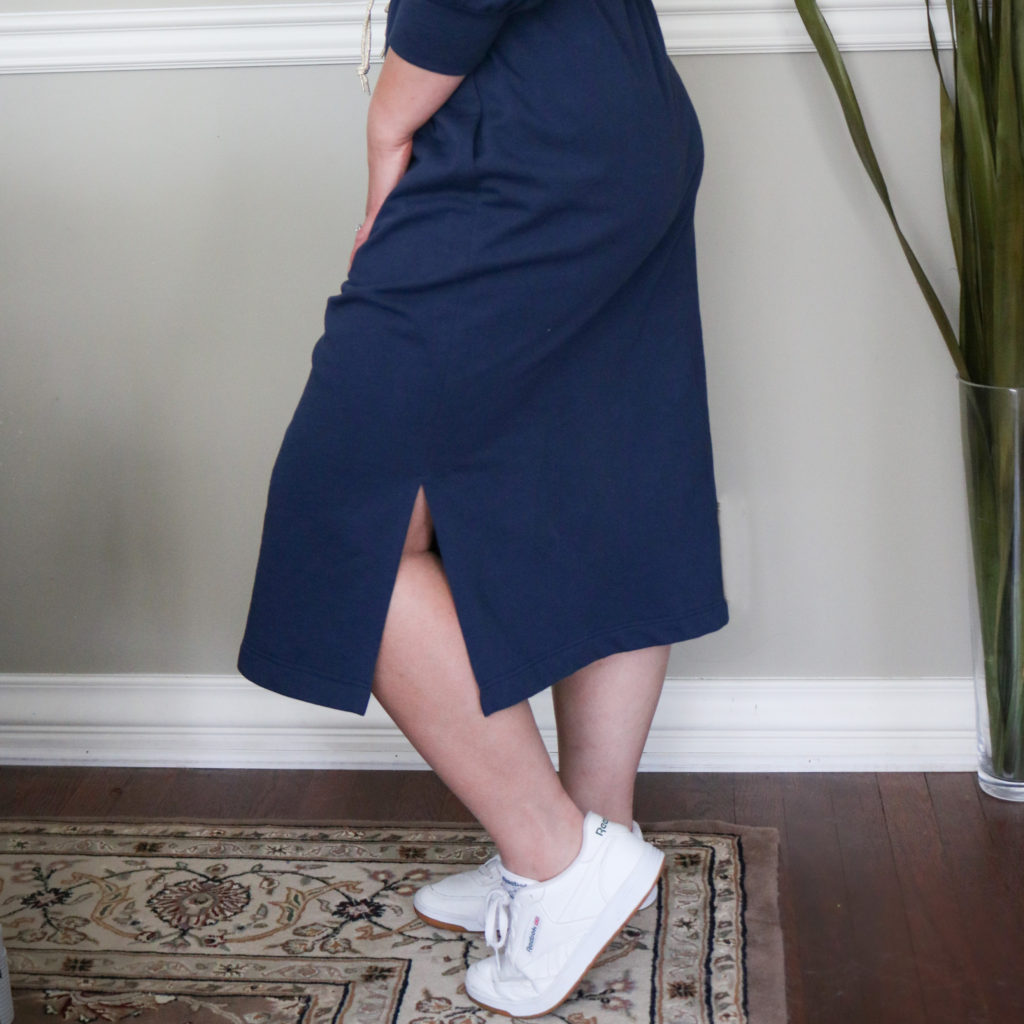
With the skirt, I made a split about 10″ up from the bottom edge. I drive a mini-van and I know getting up and down from the seat is MUCH easier if I have side slits. Next time, I would definitely add in a wider seam allowance but luckily the weight of the sweatshirt fleece keeps the opening straight.
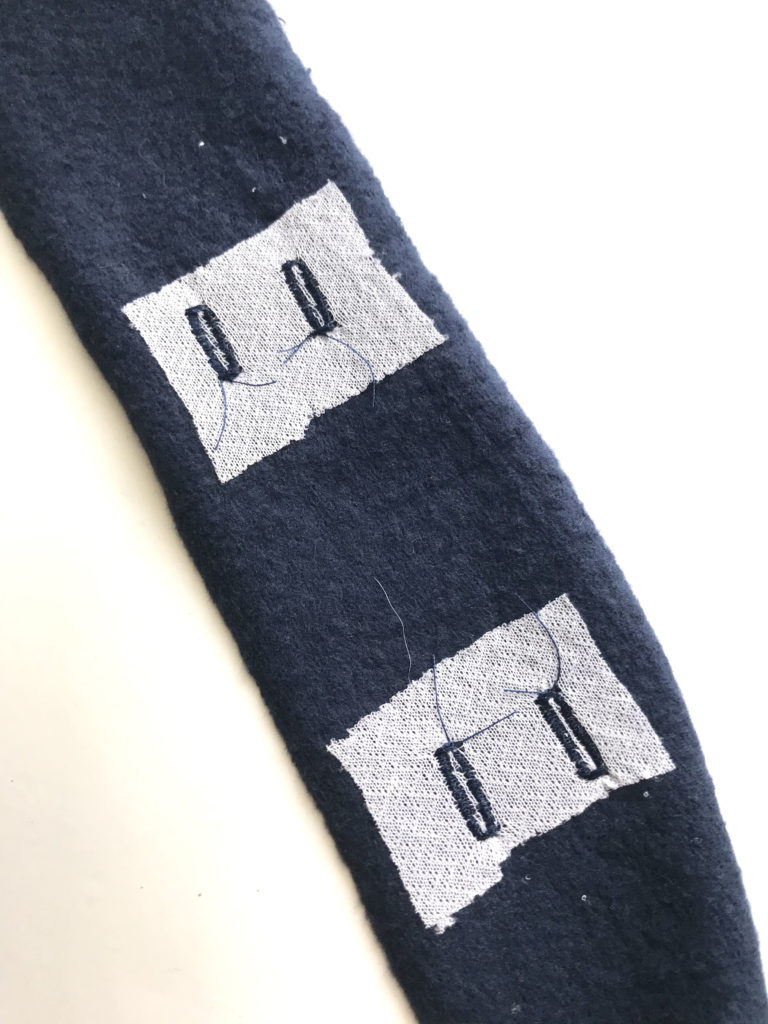
TIP: For the waistband, I added some knit interfacing before making the buttonholes. Knits can get easily torn up (at least with my machine) when making the openings, so I made sure to reinforce the areas. This will also help with wear overtime from the elastic stress.
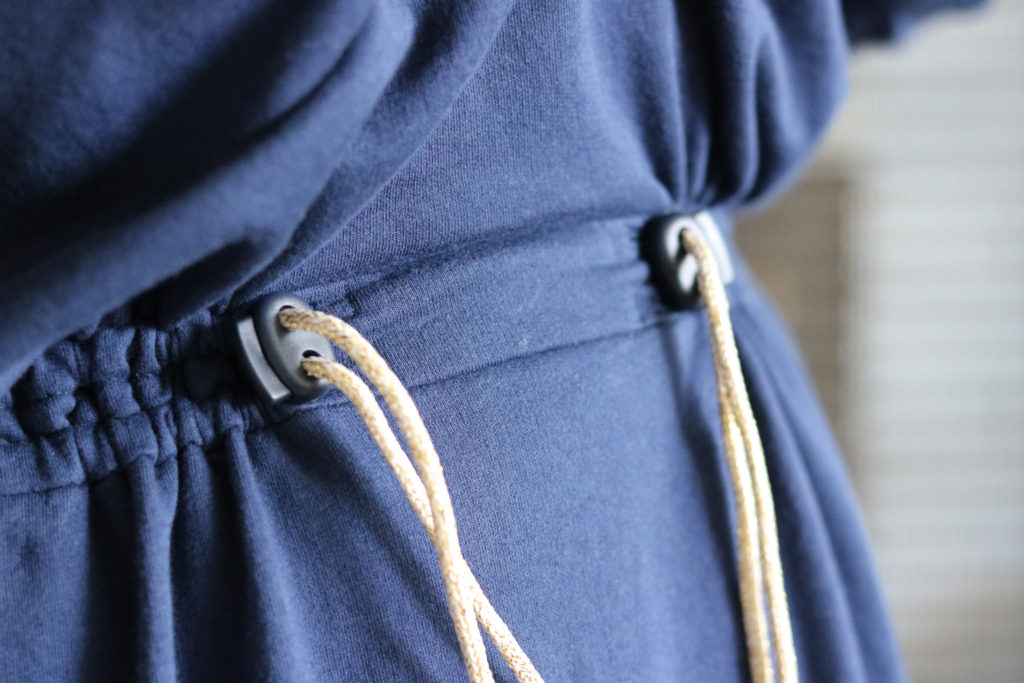
Speaking of elastic…I couldn’t get out to the store in time for this post and the Fibre Mood Link Party #18. So instead of navy elastic cording, I improvised with metallic gold drawstrings I bought from Maker Mountain Fabrics. (Who doesn’t say it pay to have a stash, right?) Once I have a chance to get out, I’ll sub out the drawstrings for elastic.
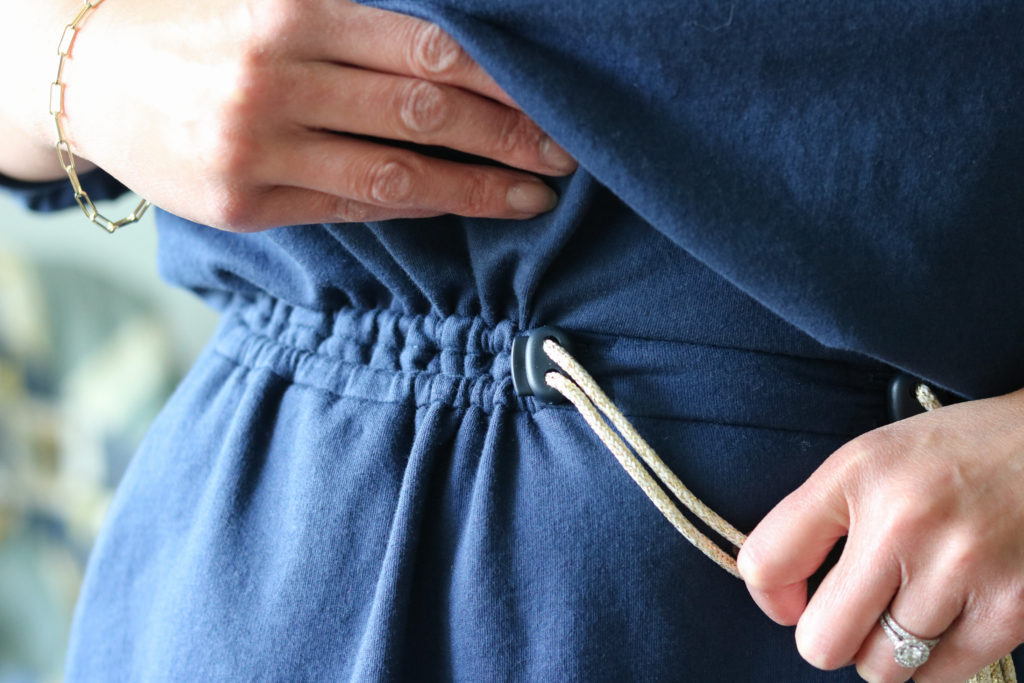
The cord locks are left over from mask-making. I found a lot of deals online and came across a nice multi-colored pack awhile ago. Fortunately, I have exactly two navy ones left to match my fabric. Even with strings instead of cords, I’m loving the ease of wear with the locks. I can change how high I want to wear Joy on my body…whether high waisted or lower on the hips. It’s a nice feature to change around!
FABRIC
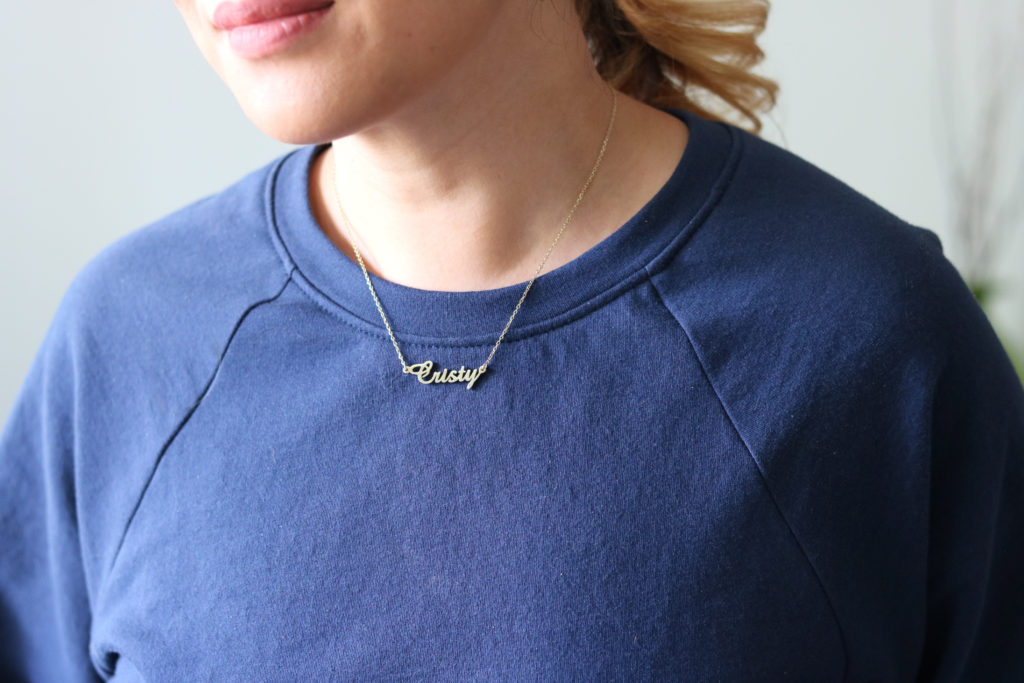
Sweatshirt knits can be pretty expensive and the initial ones I found were a bit pricey, but also at a heavier weight that what I wanted. If I was making a plush winter top, they would work, but with a full dress, I didn’t want a fabric that would be too thick and weigh me down.
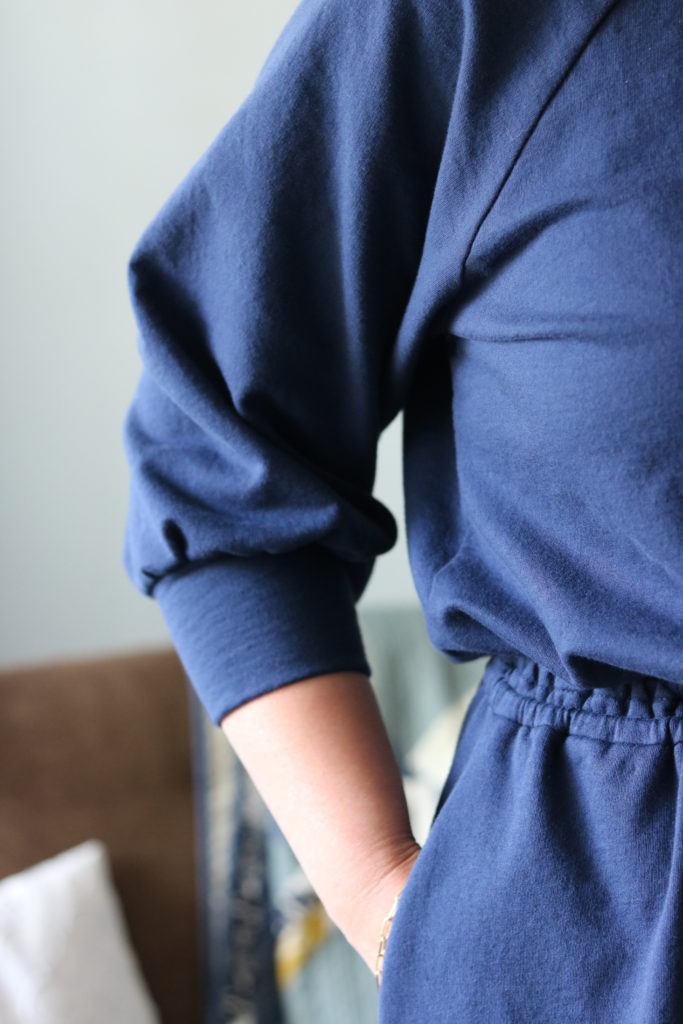
After some late night online shopping, I found this SUPER soft ORGANIC cotton sweatshirt fleece from Fabric.com. It was perfect with the signature sweatshirt look (knit on one side and soft fleece on the other) and came in classic navy! I think this sweatshirt fleece was a GREAT find at a very reasonable price AND it’s organic. If I’m buying new fabric, I definitely look for ones that are from the USA and/or are environmentally friendly. I’ve only washed it once so far, but there has not been any initial pilling and the inside fleece still feels amazing! If you are looking for a midweight sweating shirting fabric, I would highly recommend this one!
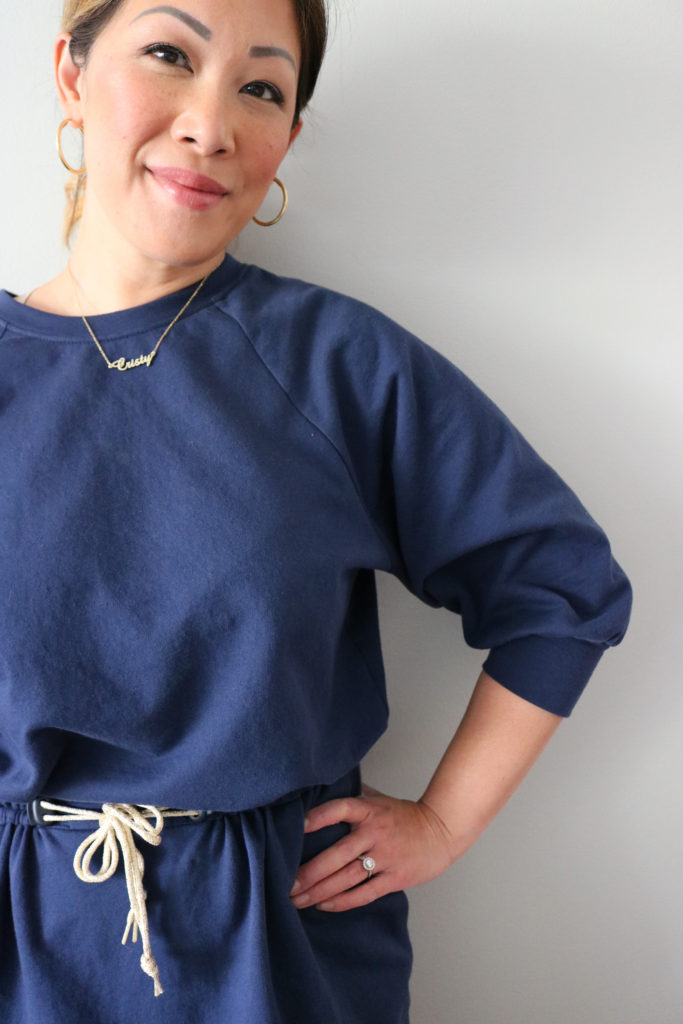
Overall, I really love this dress. I imagine wearing it All. The. Time. for something easy and comfortable while looking pulled together. I didn’t even want to take this off after photography. Only a cold weather front made me put on pants – ha! It’s the perfect transition piece to take me out of my indoor work-from-home sweats! Are you into the Joy sweatshirt dress look? Tell me why in the comments 🙂
Happy Sewing!
Cristy
I am a Fibre Mood Brand Ambassador and affiliate. This pattern was provided in lieu of a social media post, but a blog post was not required. I purchase my own fabrics and notions. All thoughts and opinions are my own. For my full disclosures, click here.

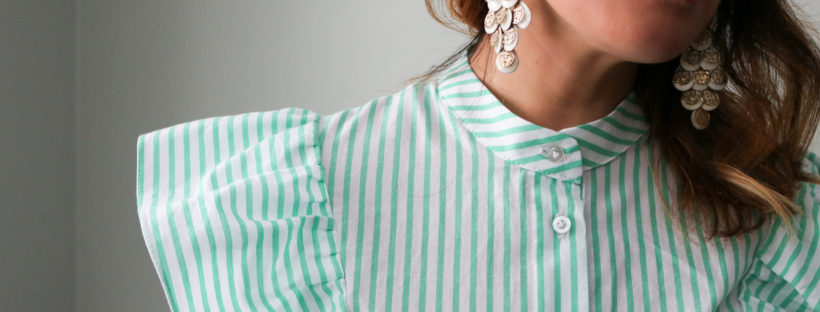
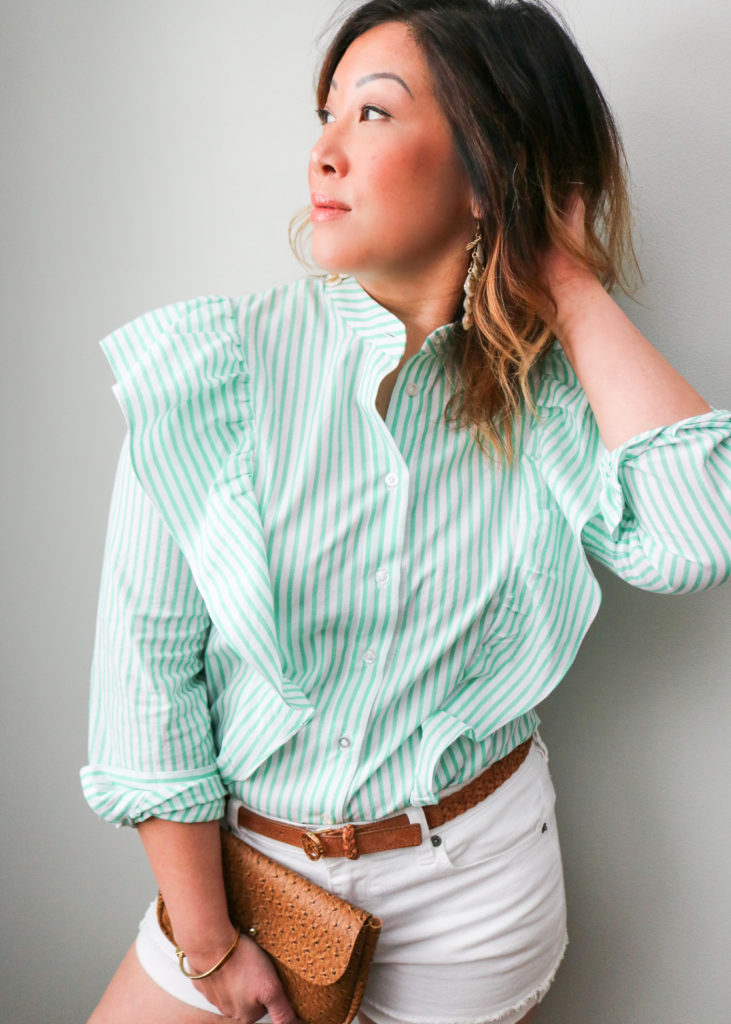 When I saw the previews for
When I saw the previews for 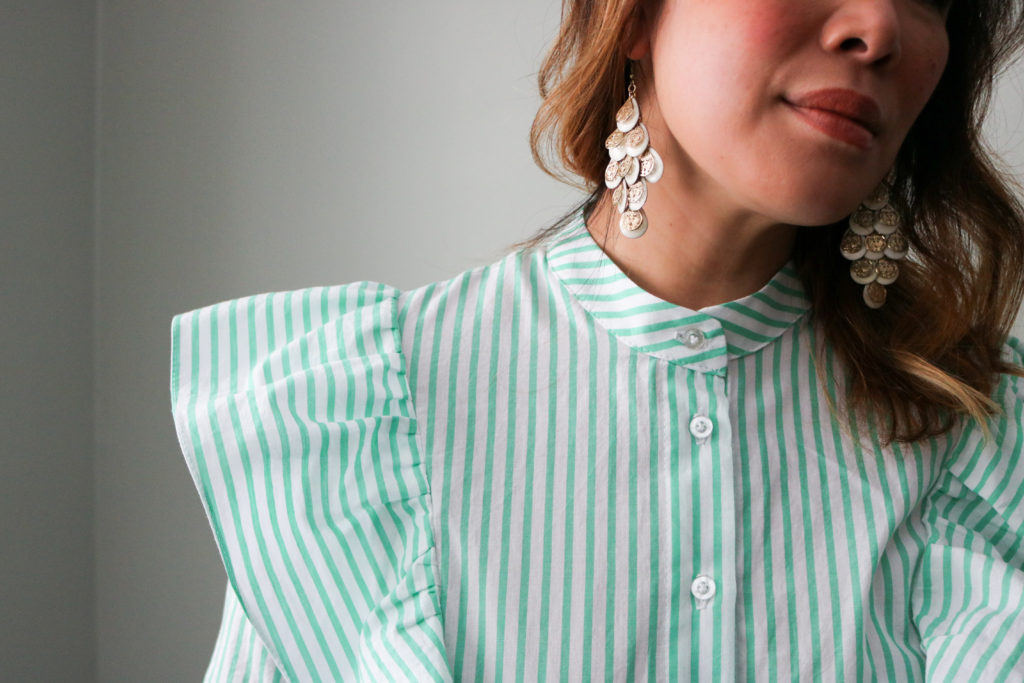 We’re still in a life of Zoom calls, so statement blouses are all on trend. That means the prairie influence of last year is hanging around even a little longer than trends generally go — YAY! I know not everyone is into that “cottage-core” style, so updating it with the right fabric can make the look last a little longer than the all-out trend.
We’re still in a life of Zoom calls, so statement blouses are all on trend. That means the prairie influence of last year is hanging around even a little longer than trends generally go — YAY! I know not everyone is into that “cottage-core” style, so updating it with the right fabric can make the look last a little longer than the all-out trend.
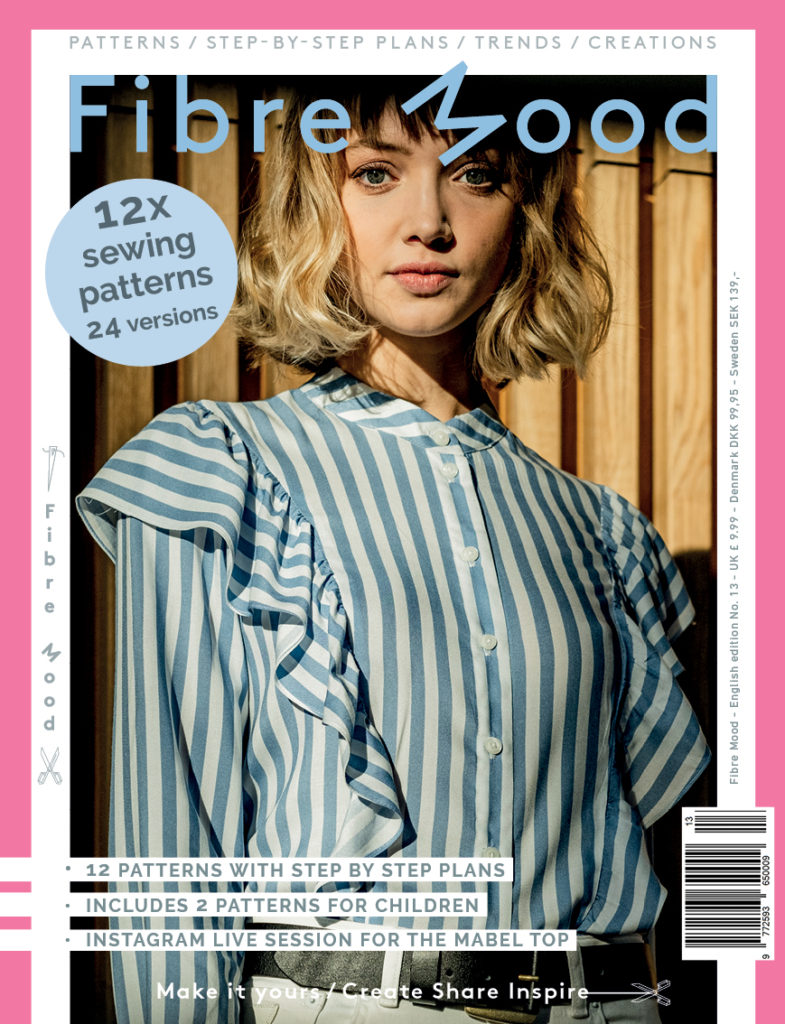
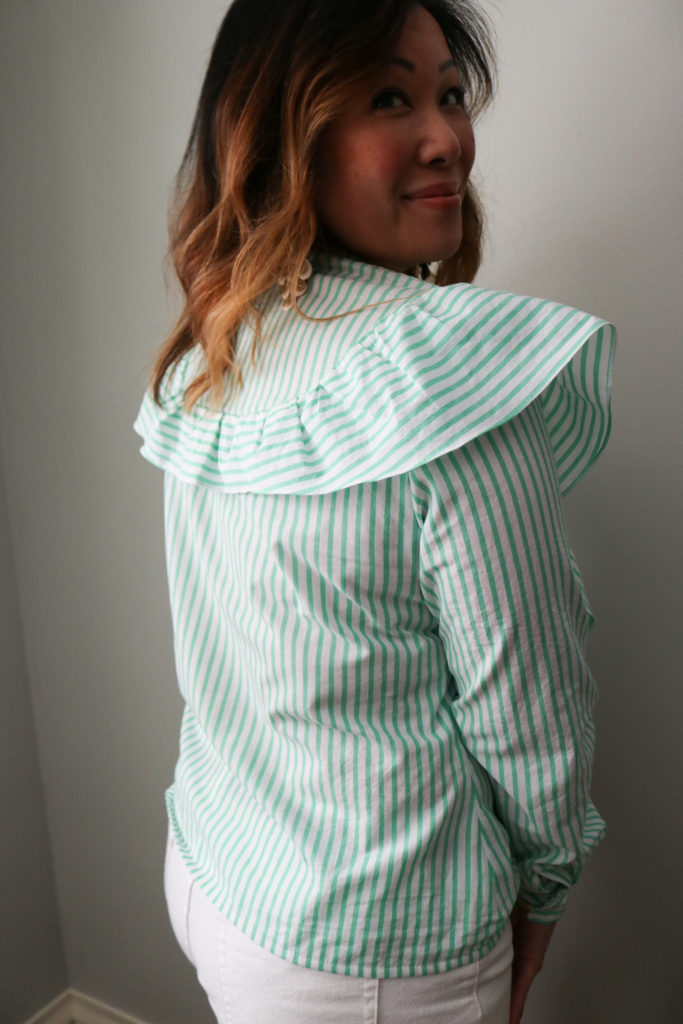 While in the middle of deep Ohio snow, I knew I needed to start thinking about warm weather and spring clothes. This cheerful
While in the middle of deep Ohio snow, I knew I needed to start thinking about warm weather and spring clothes. This cheerful 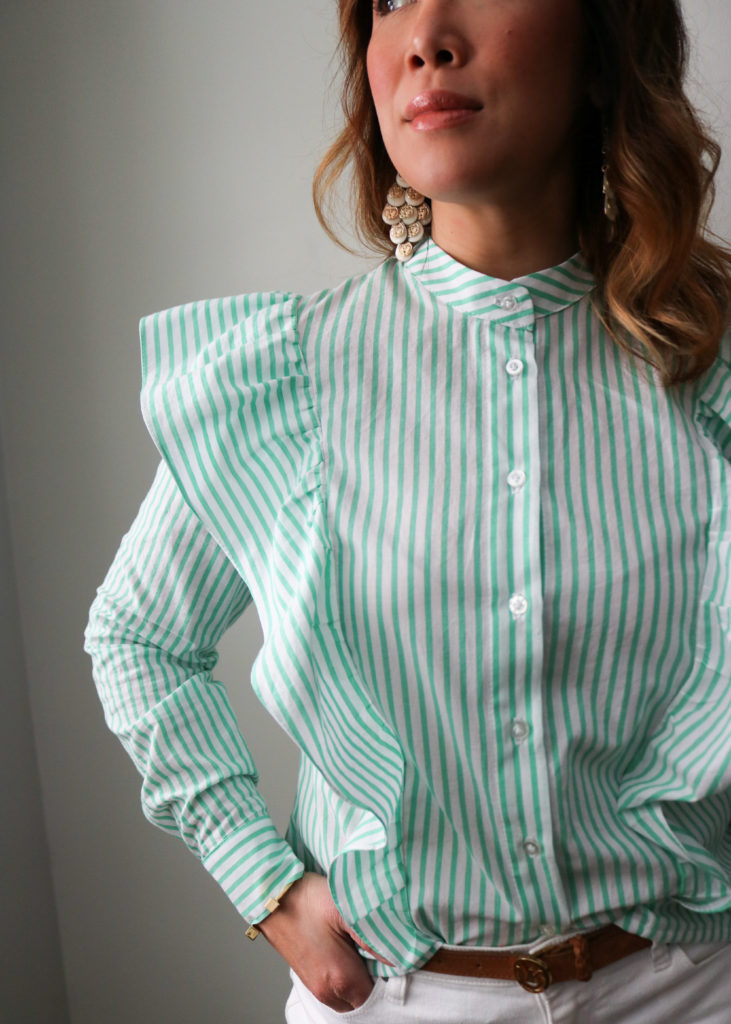 I chose to use lawn since it’s very lightweight and breathable — perfect for warm weather. However, it also tends to be semi-sheer. So lawn is great for blouses and other tops….but you will definitely need a lining for a dress or pants. The other great feature of lawn…especially 100% cotton version, is that it holds great structure while still having a soft hand. While the fabric is light, you can really get great body and volume that won’t cling onto every curve and still make some gorgeous statement ruffles! If you like the look more of the FM cover sample, something more drapey like a rayon challis or light tencel twill would give you that look.
I chose to use lawn since it’s very lightweight and breathable — perfect for warm weather. However, it also tends to be semi-sheer. So lawn is great for blouses and other tops….but you will definitely need a lining for a dress or pants. The other great feature of lawn…especially 100% cotton version, is that it holds great structure while still having a soft hand. While the fabric is light, you can really get great body and volume that won’t cling onto every curve and still make some gorgeous statement ruffles! If you like the look more of the FM cover sample, something more drapey like a rayon challis or light tencel twill would give you that look.
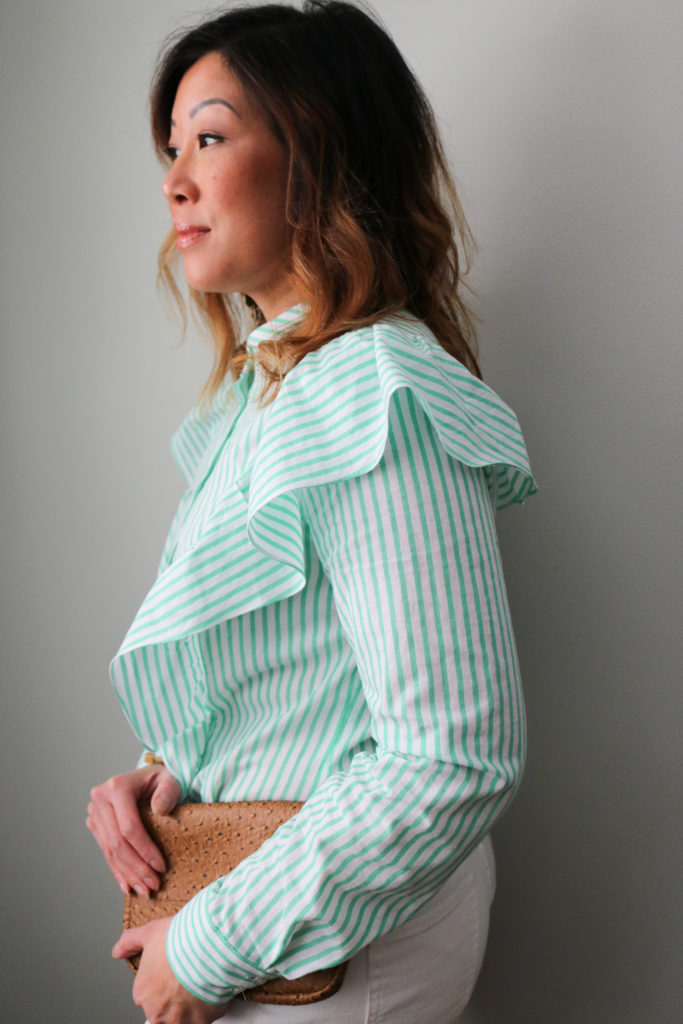 This fabric purchase was made on a whim since I loved the green and white stripes. And…I’m happy to report I would definitely buy it again. It washes and dries well since the fabric is 100% cotton (and I do NOT like to line dry if I don’t have to!) It sews up easily without shifting issues like your typical quilt cotton. Since the fabric is lightweight, I did drop my regular needle size down to 70, but used my normal all-purpose Gutermann white thread for construction.
This fabric purchase was made on a whim since I loved the green and white stripes. And…I’m happy to report I would definitely buy it again. It washes and dries well since the fabric is 100% cotton (and I do NOT like to line dry if I don’t have to!) It sews up easily without shifting issues like your typical quilt cotton. Since the fabric is lightweight, I did drop my regular needle size down to 70, but used my normal all-purpose Gutermann white thread for construction.
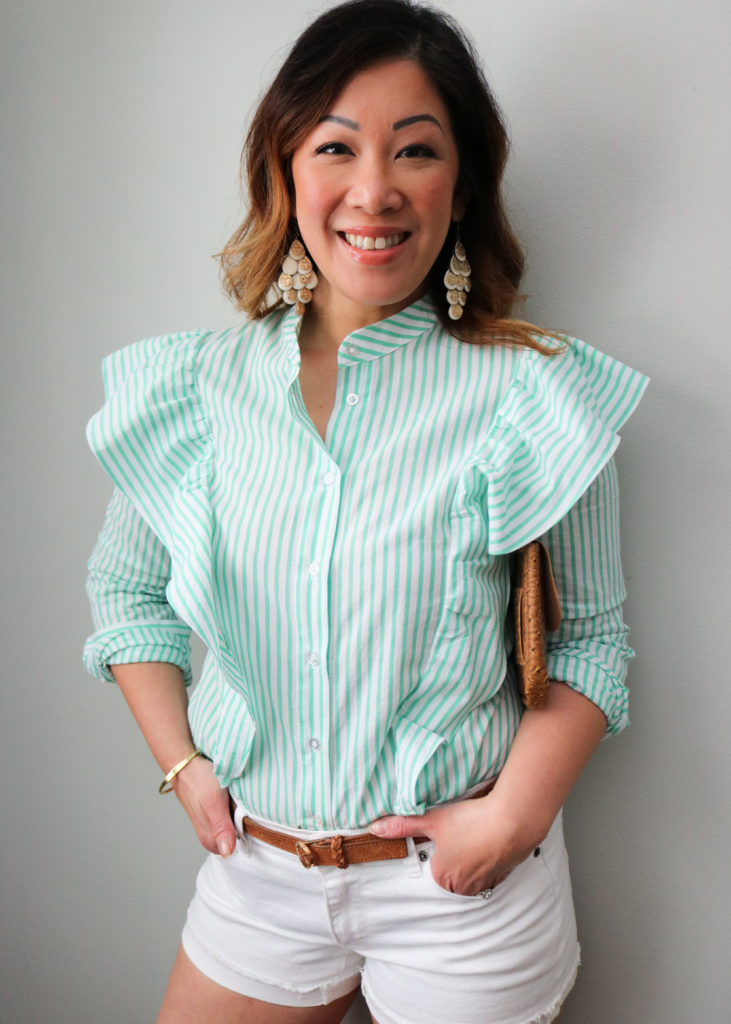
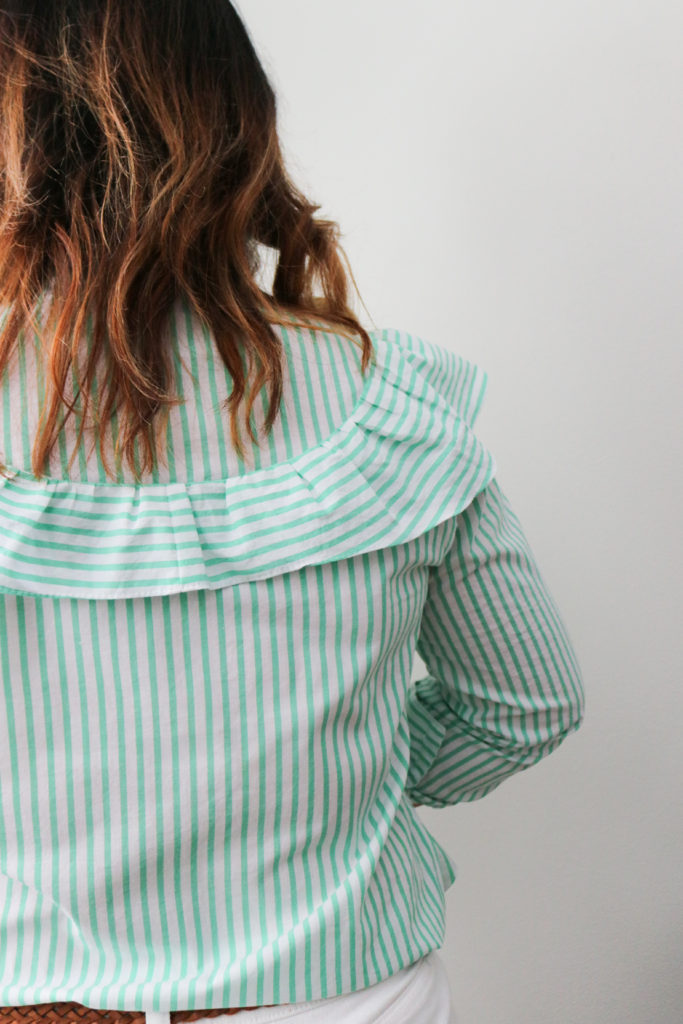 I printed the
I printed the 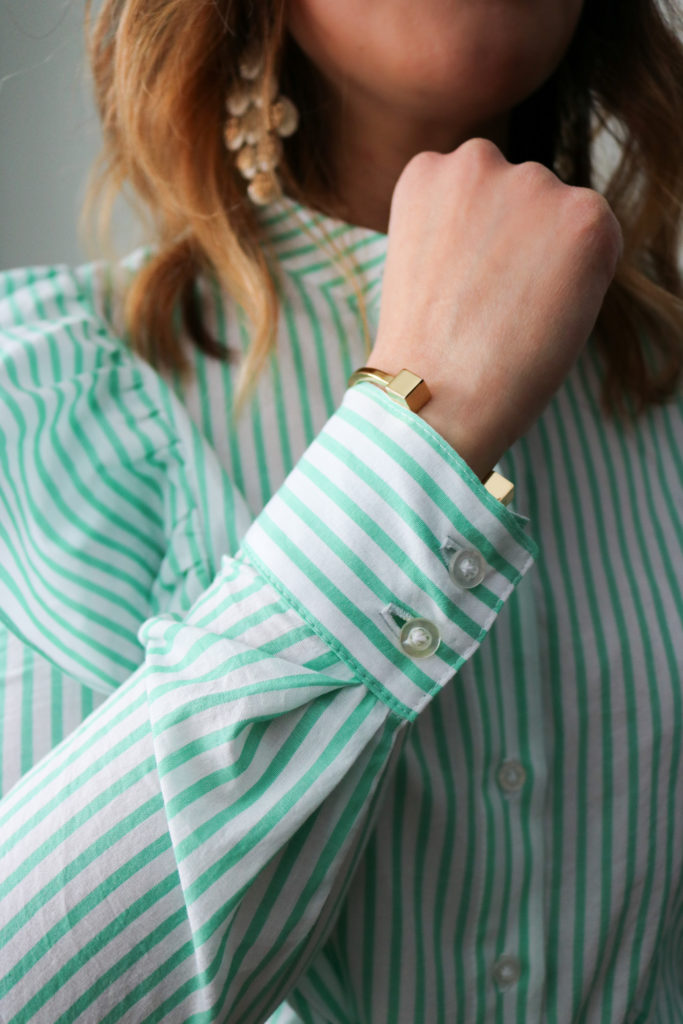 For this
For this 